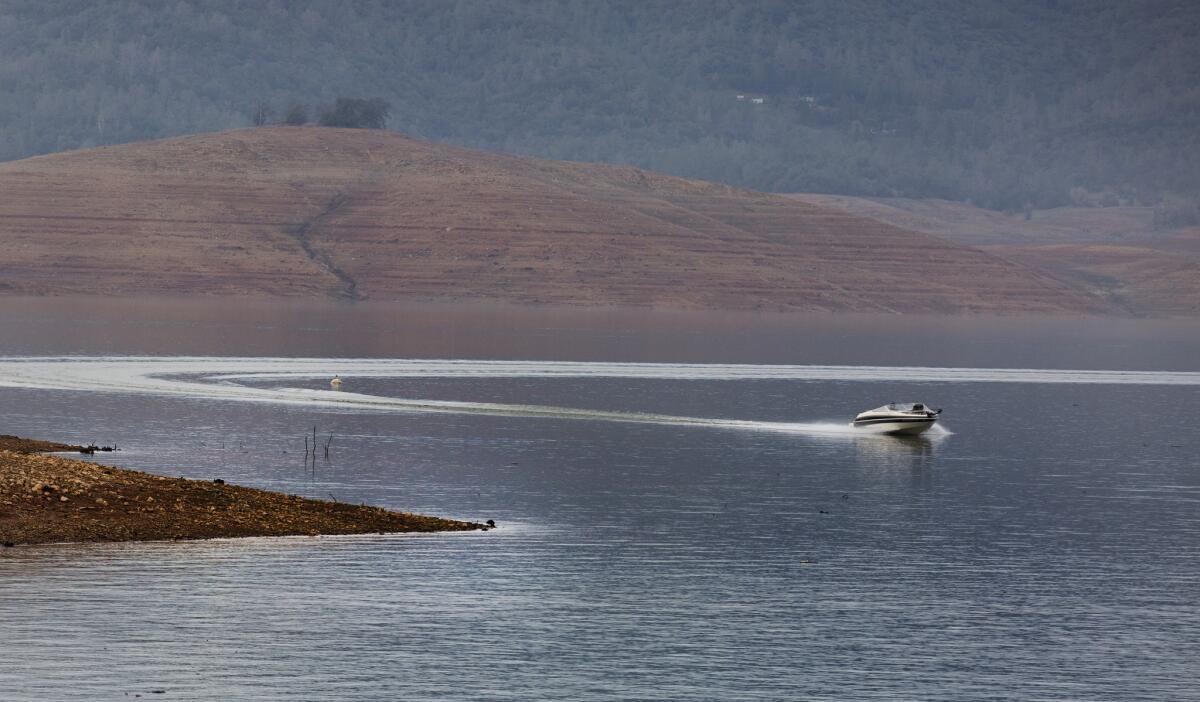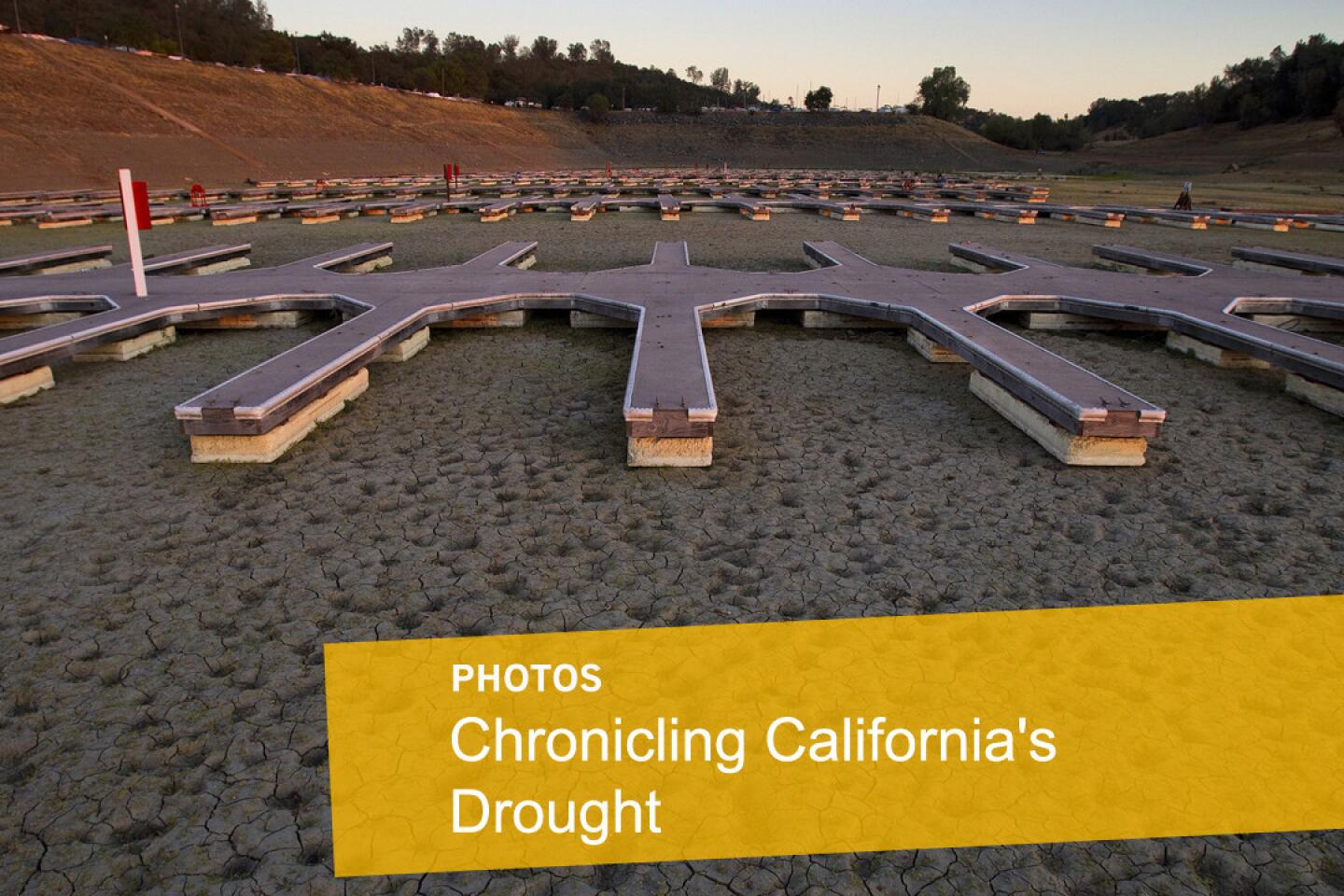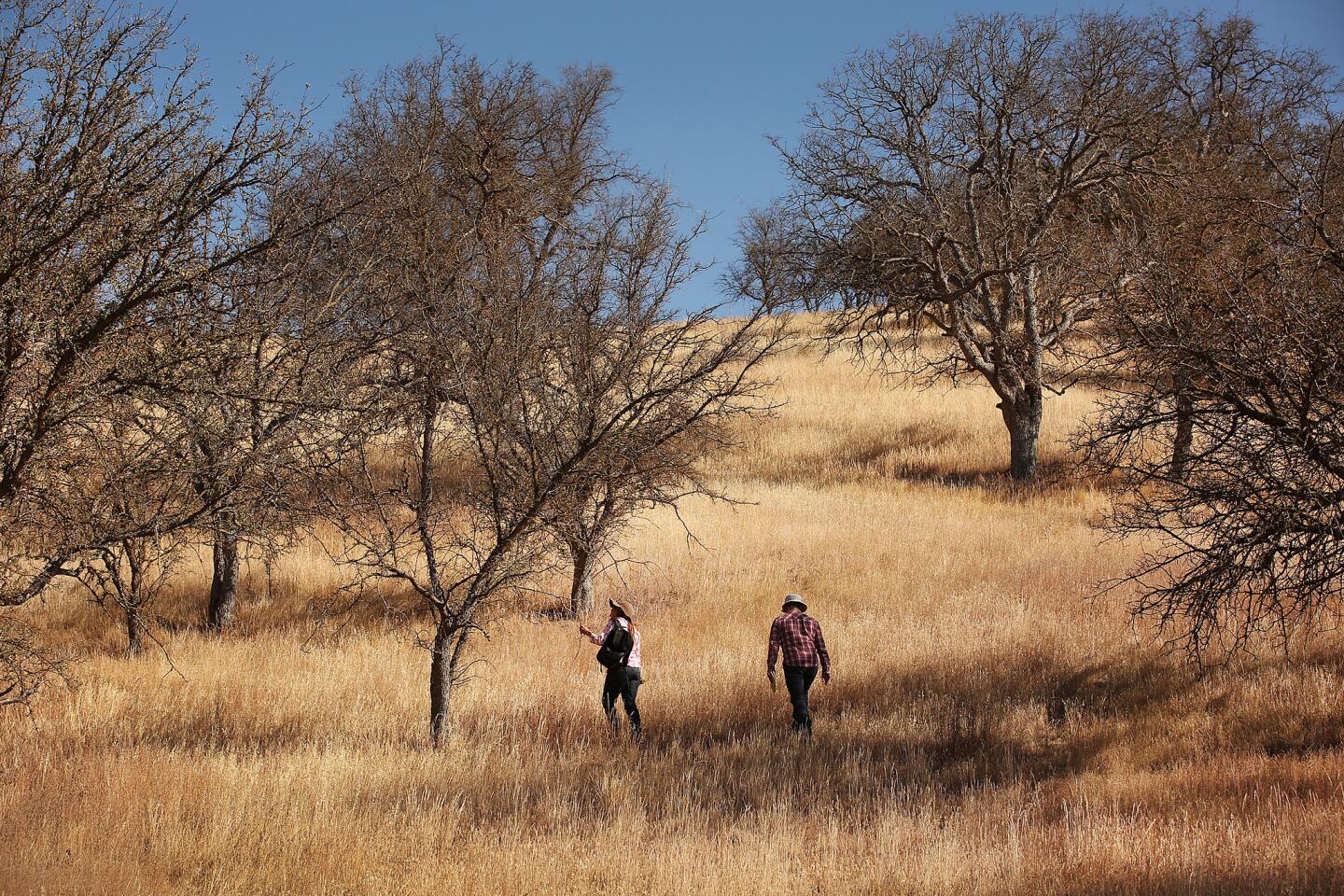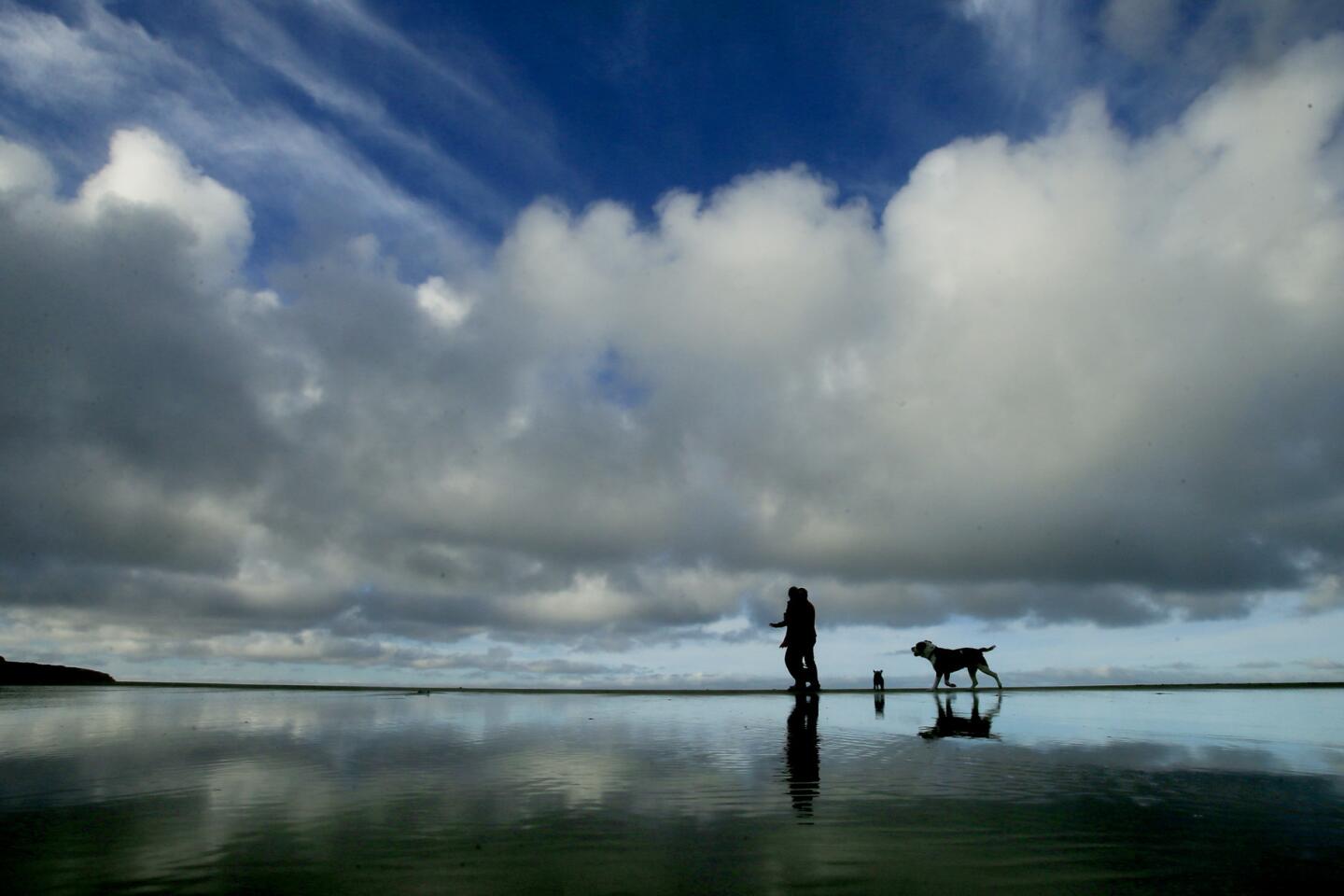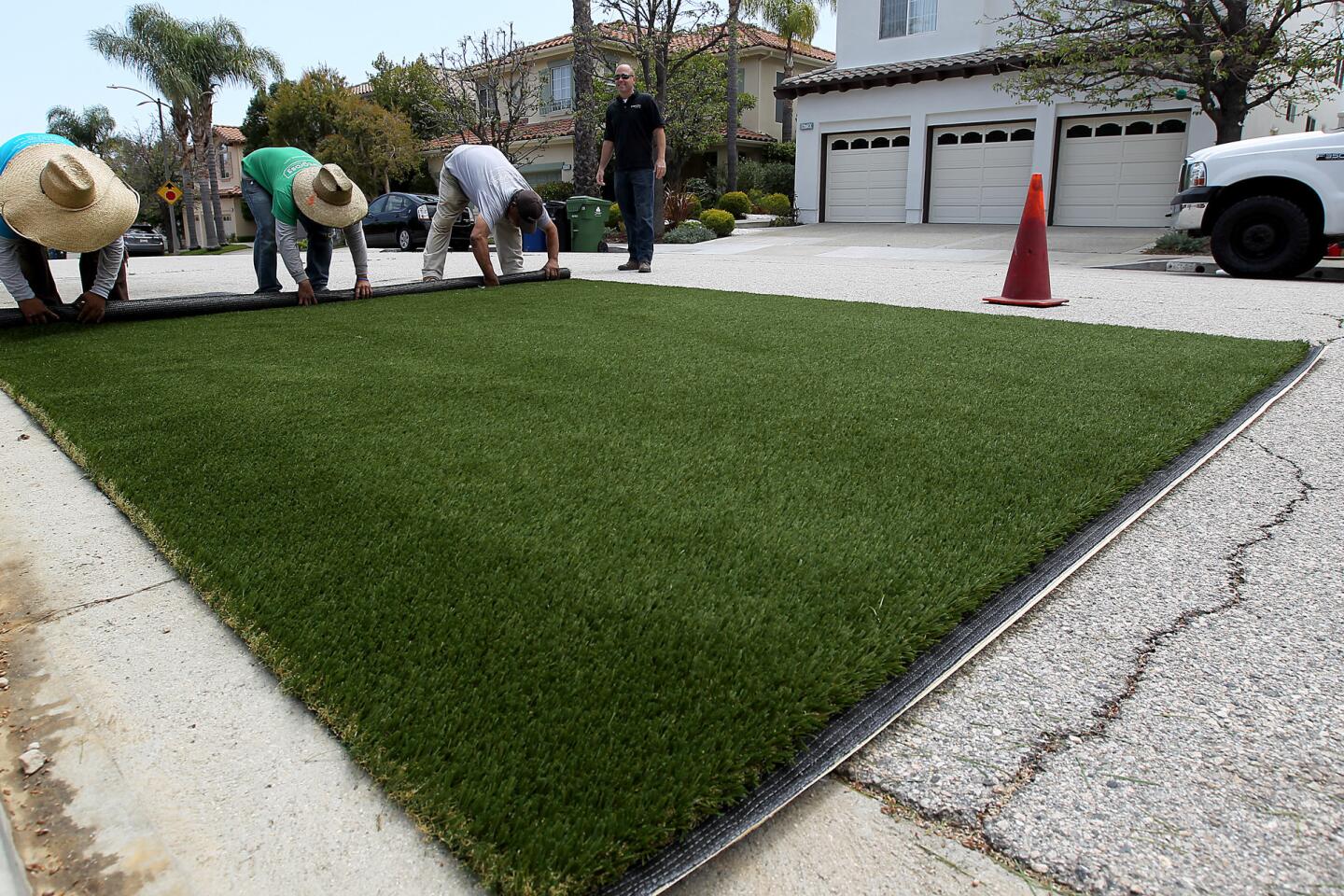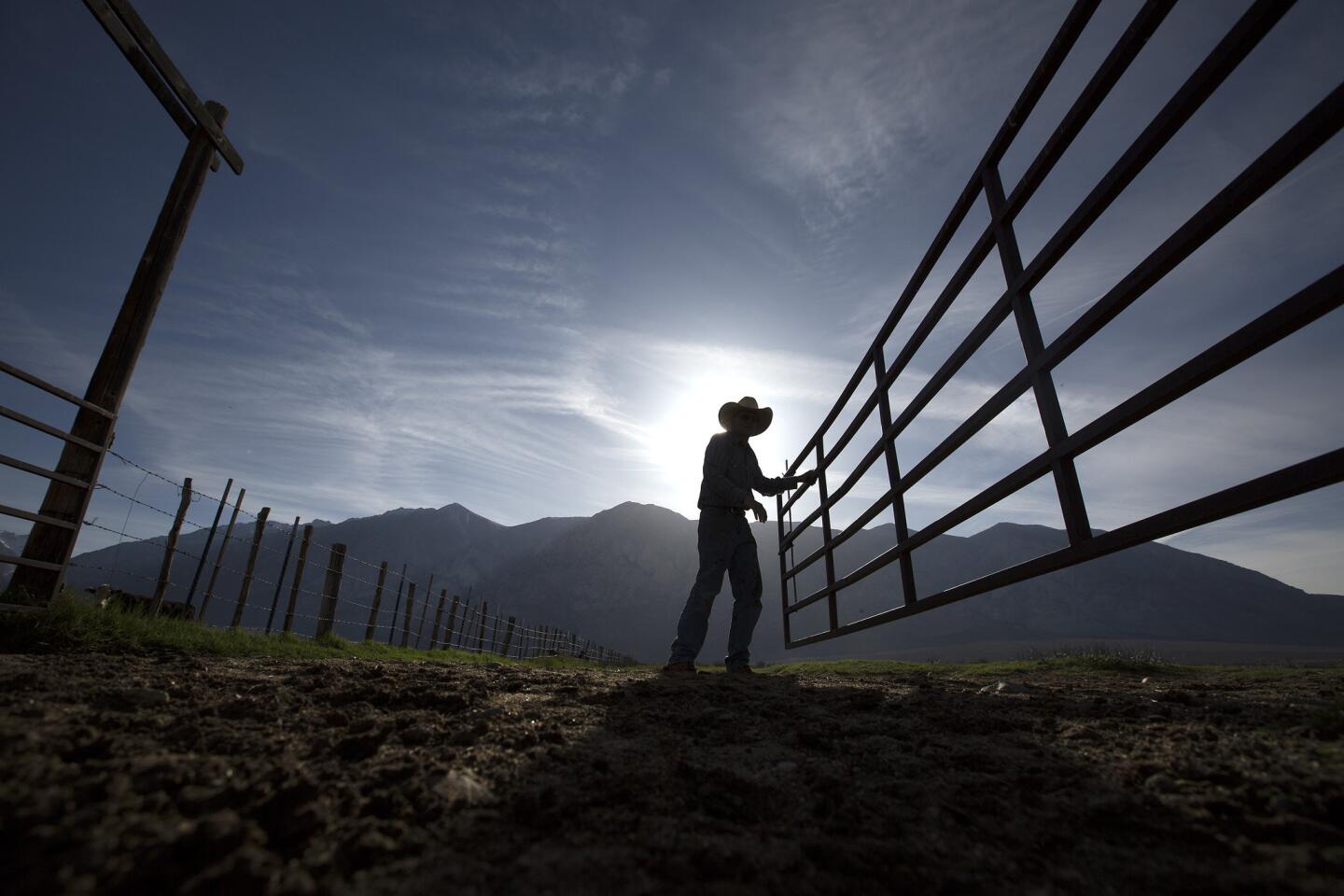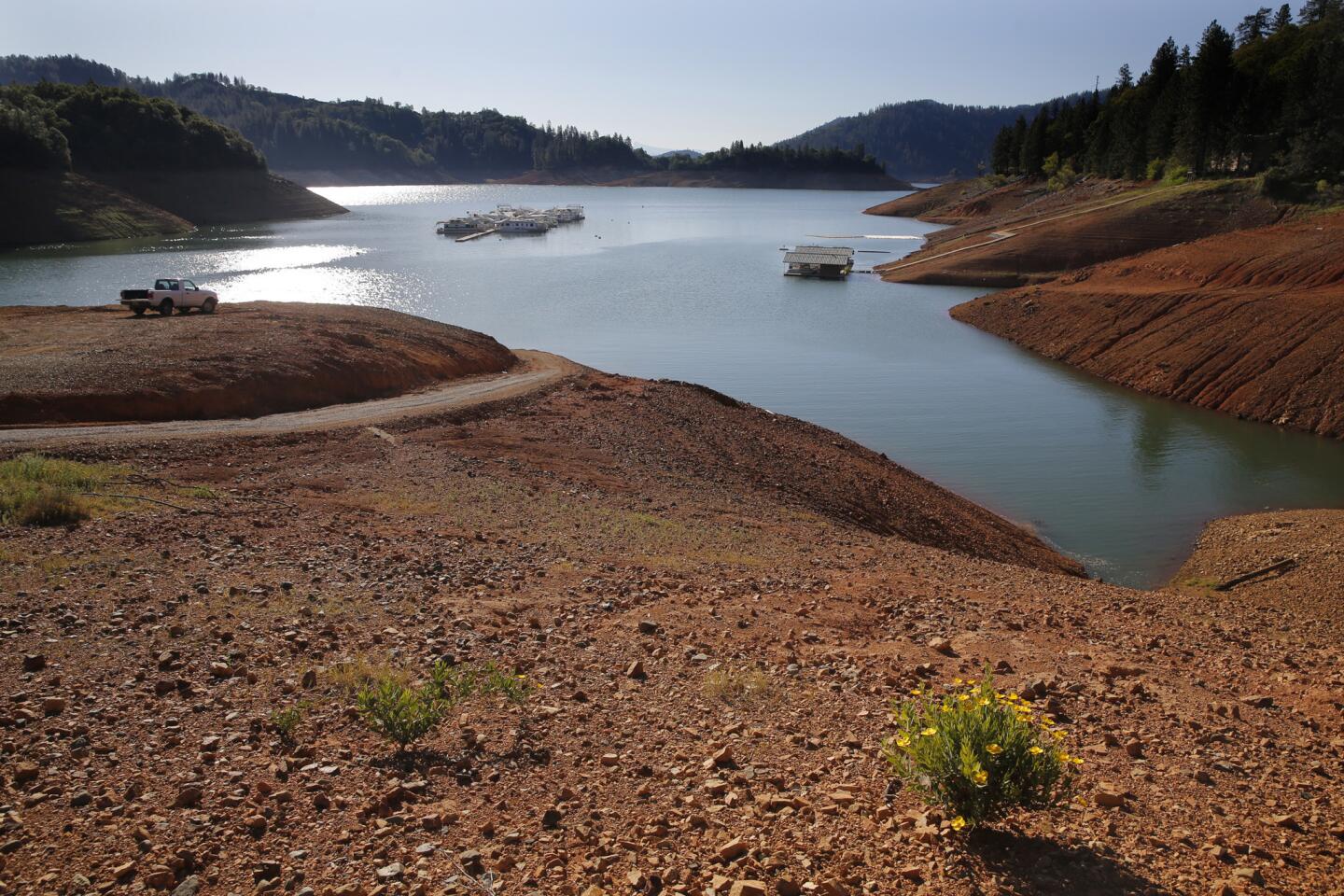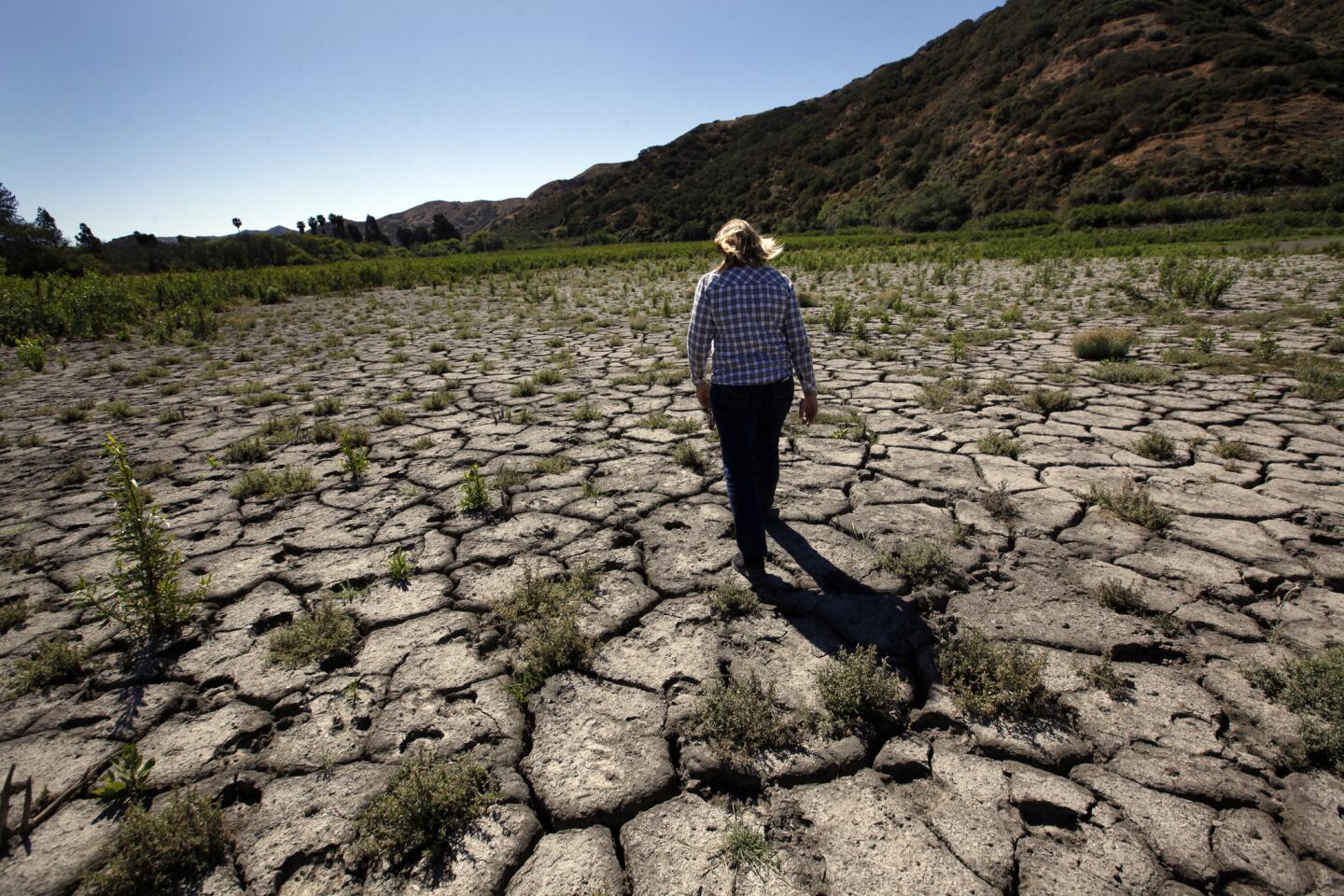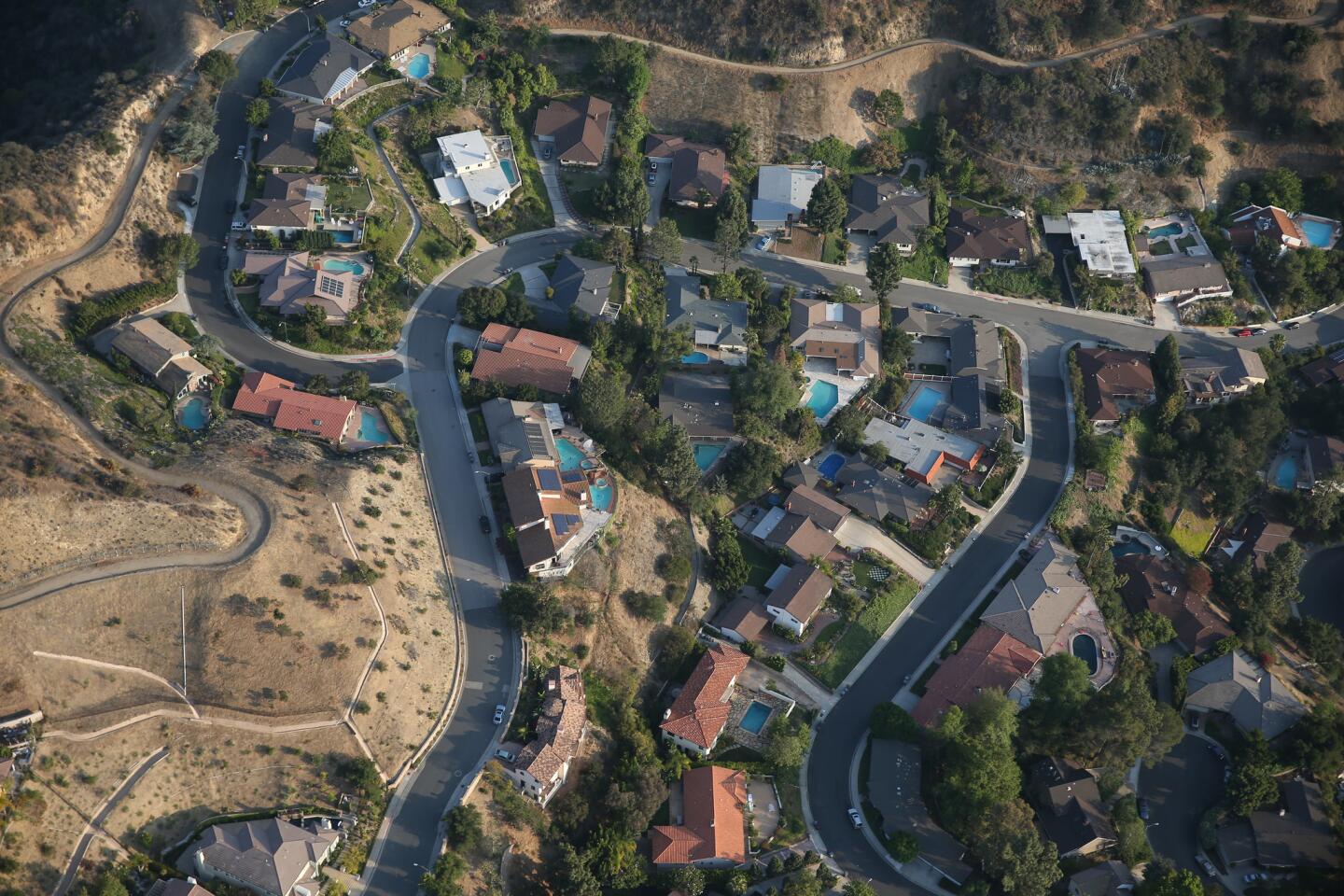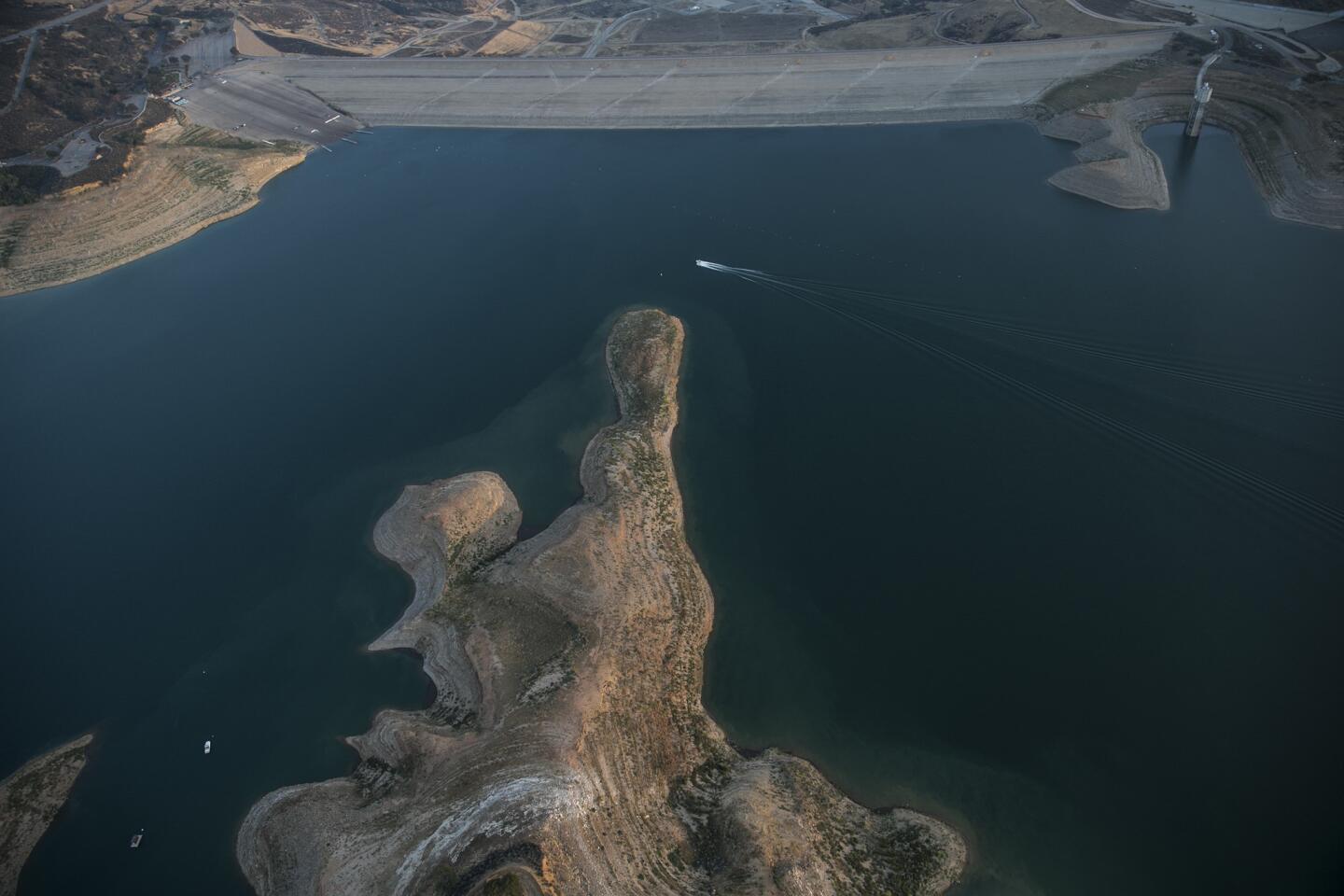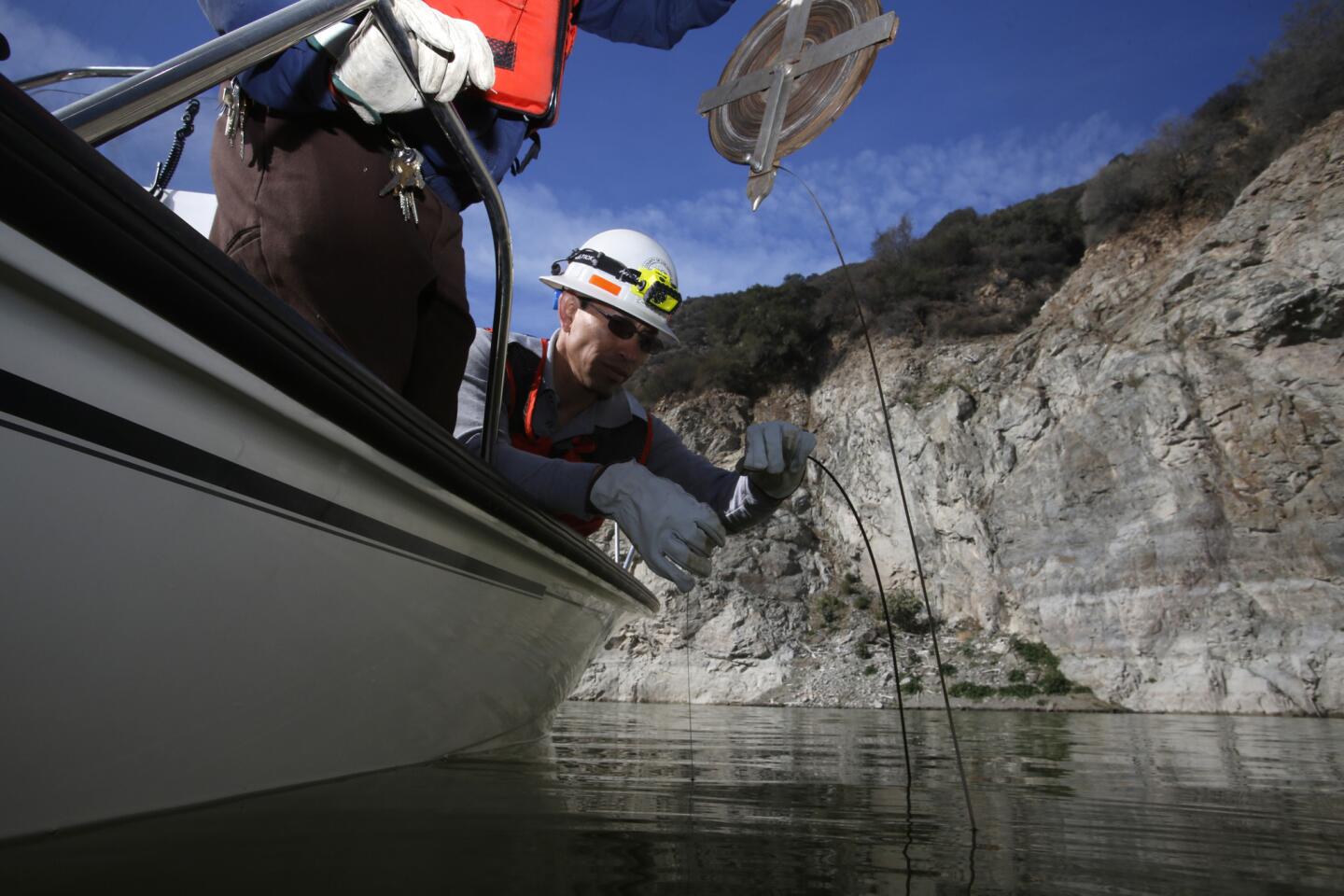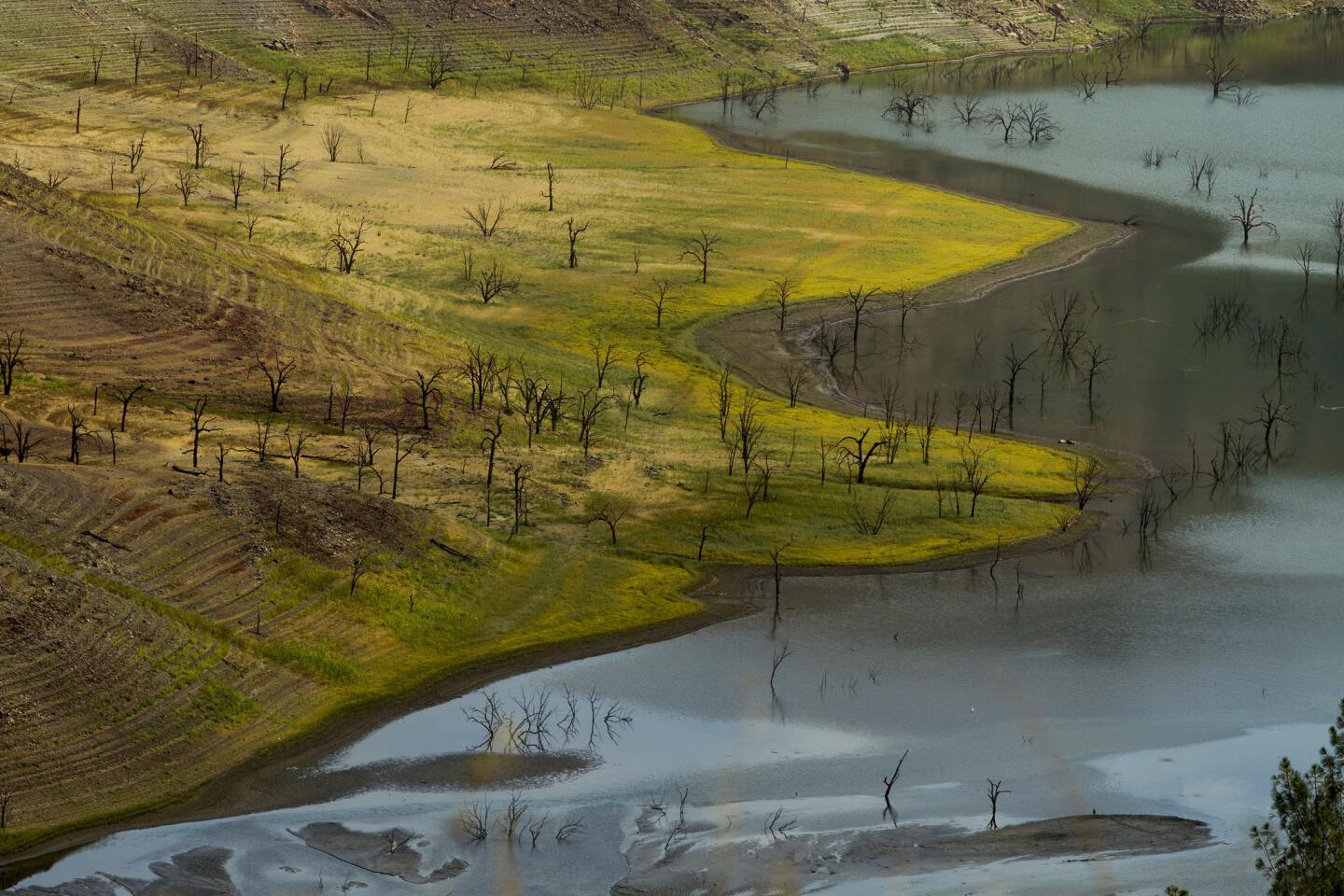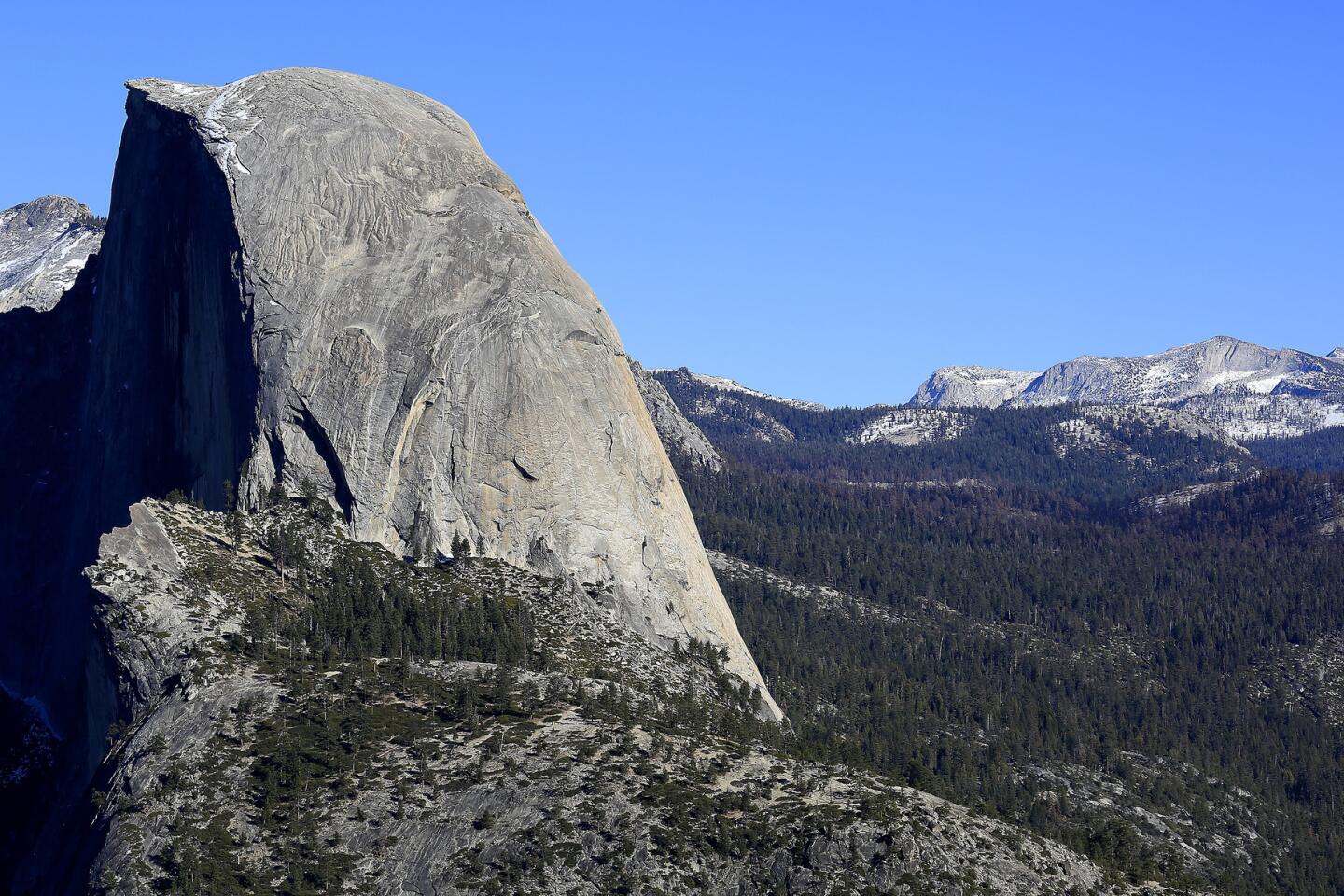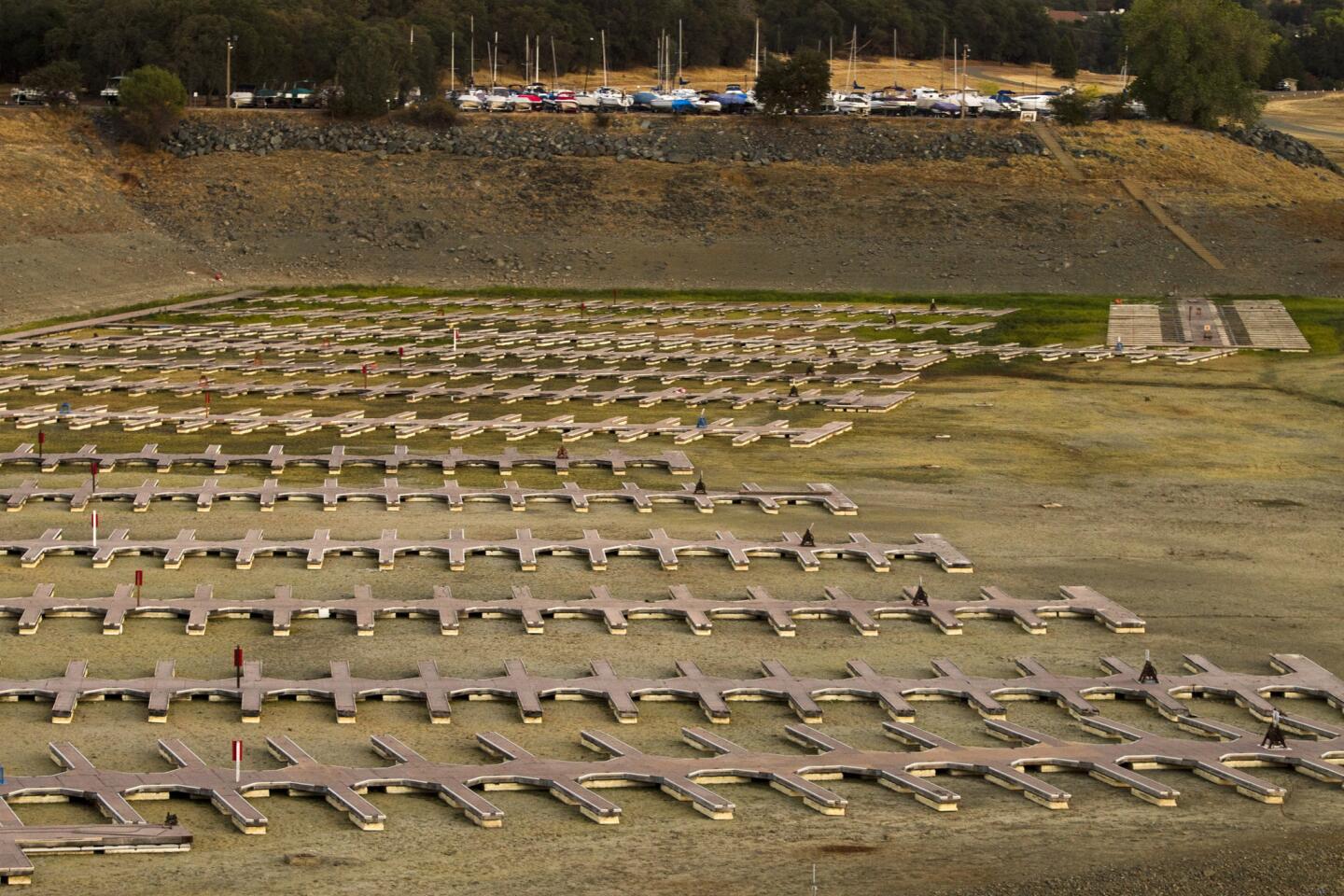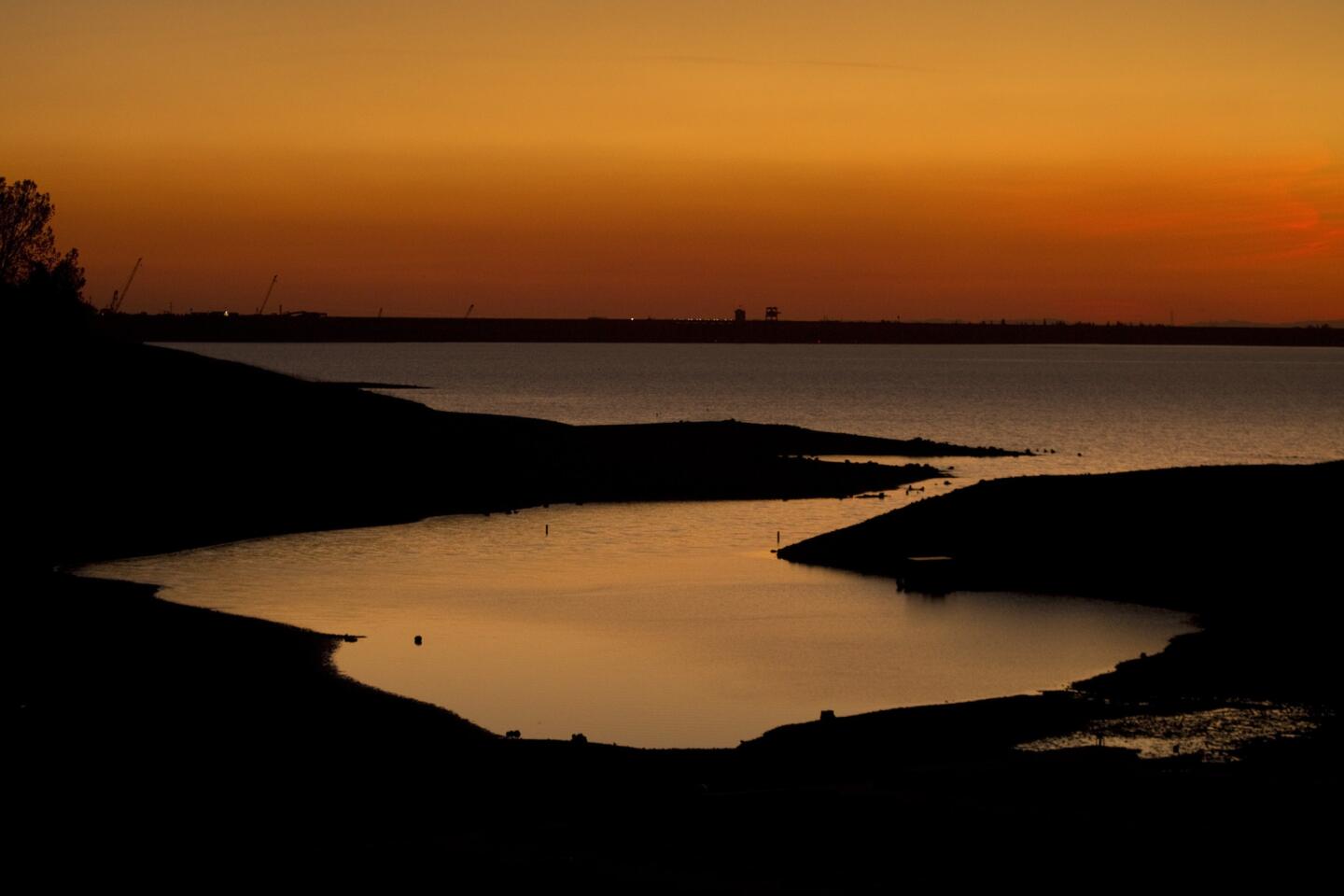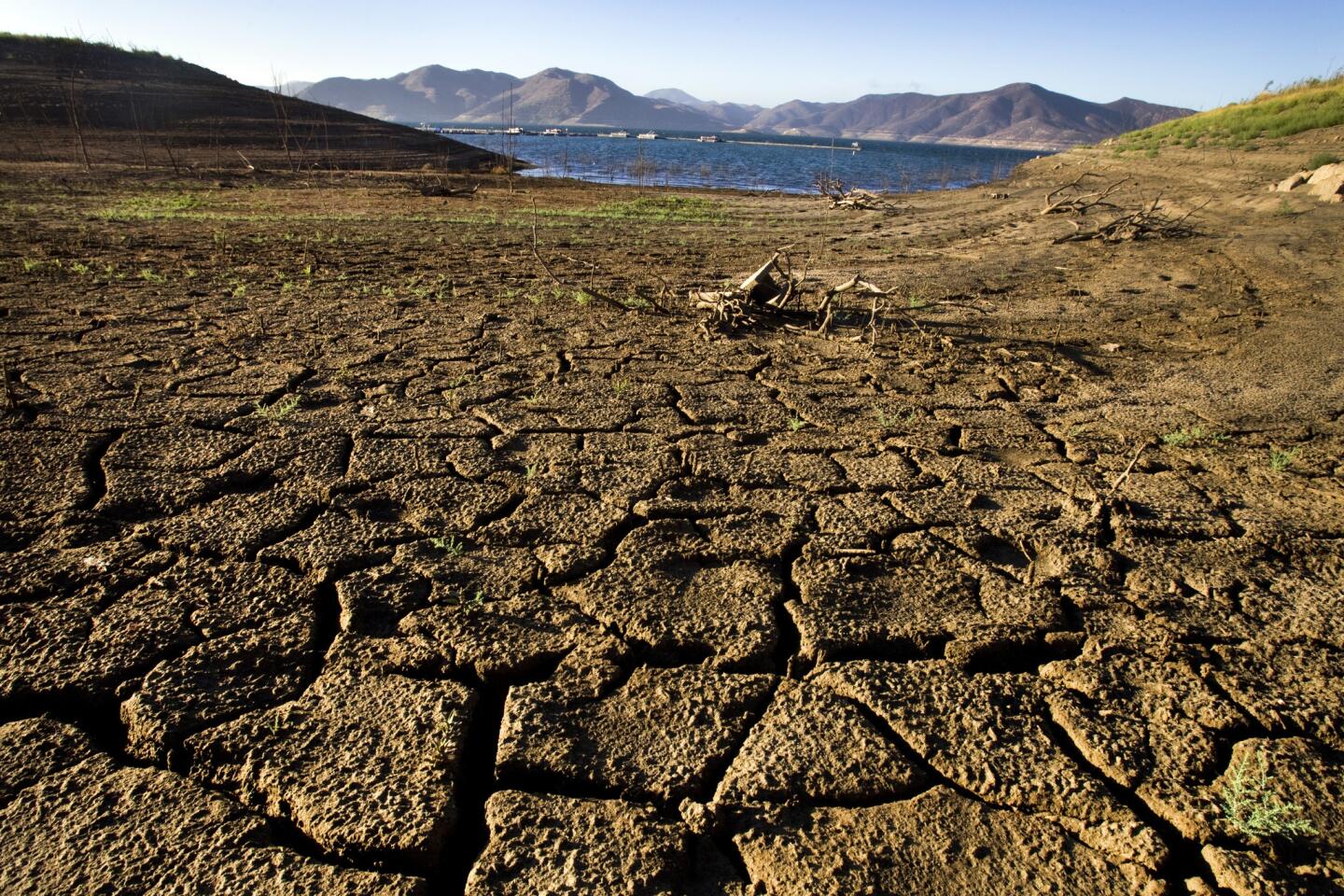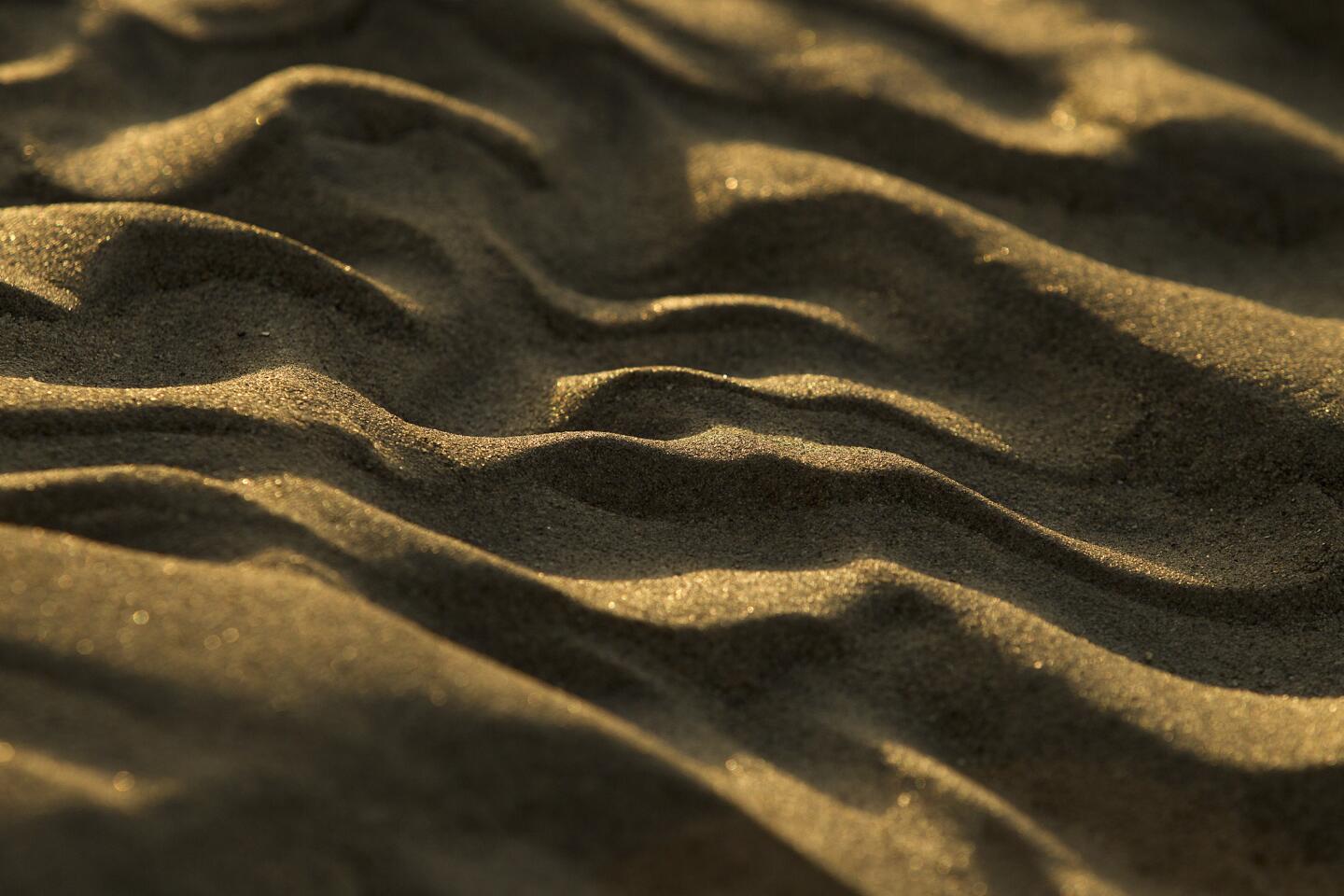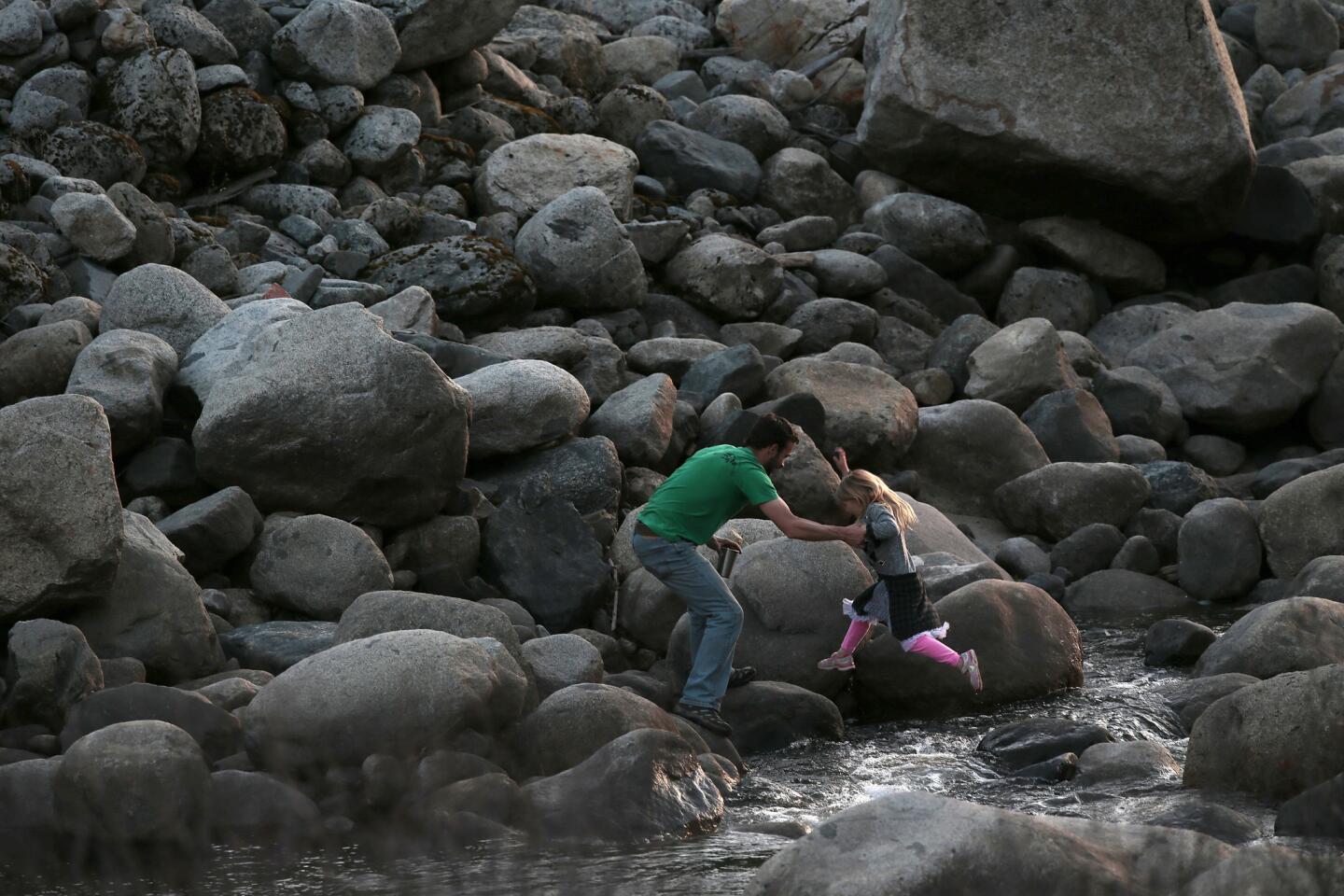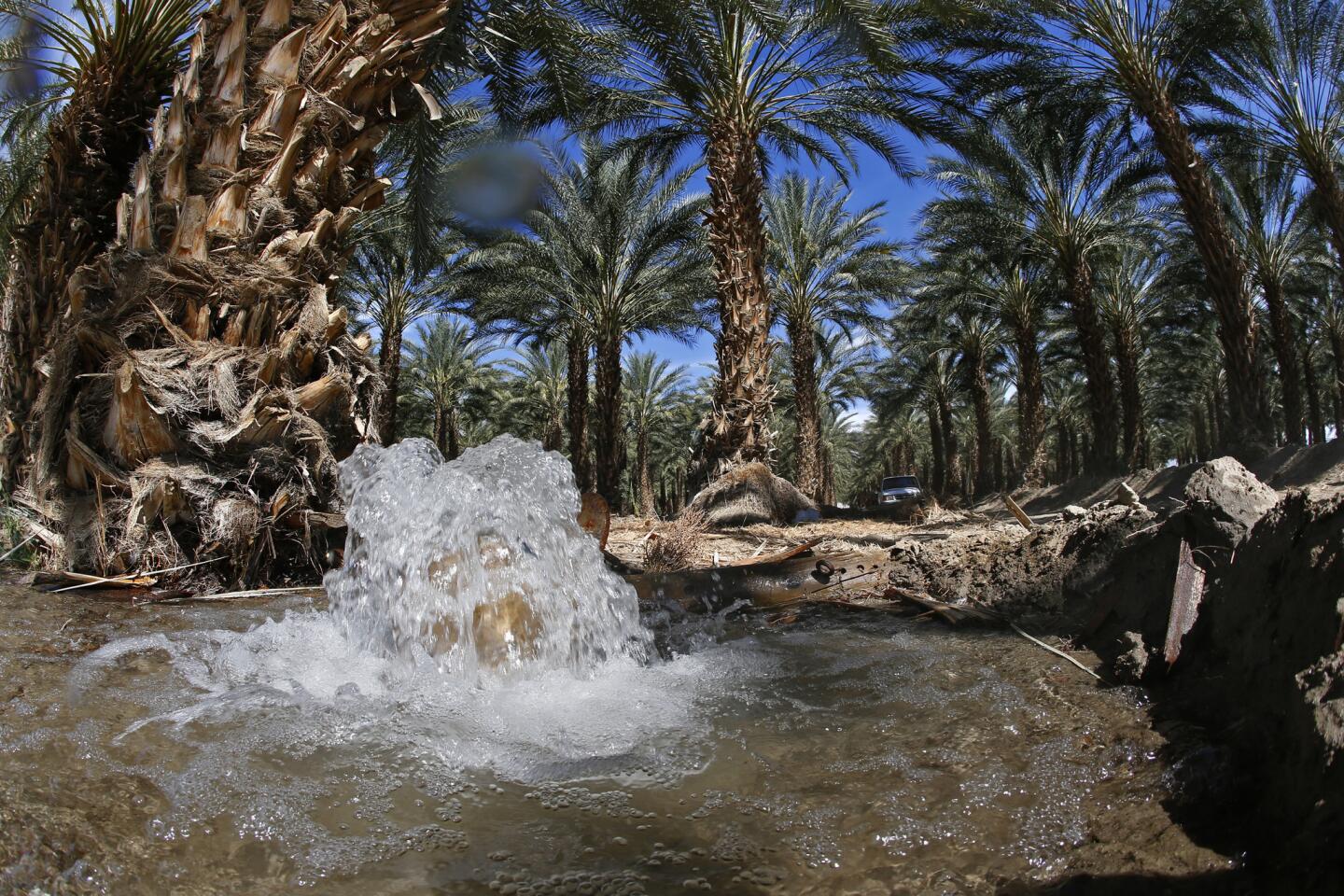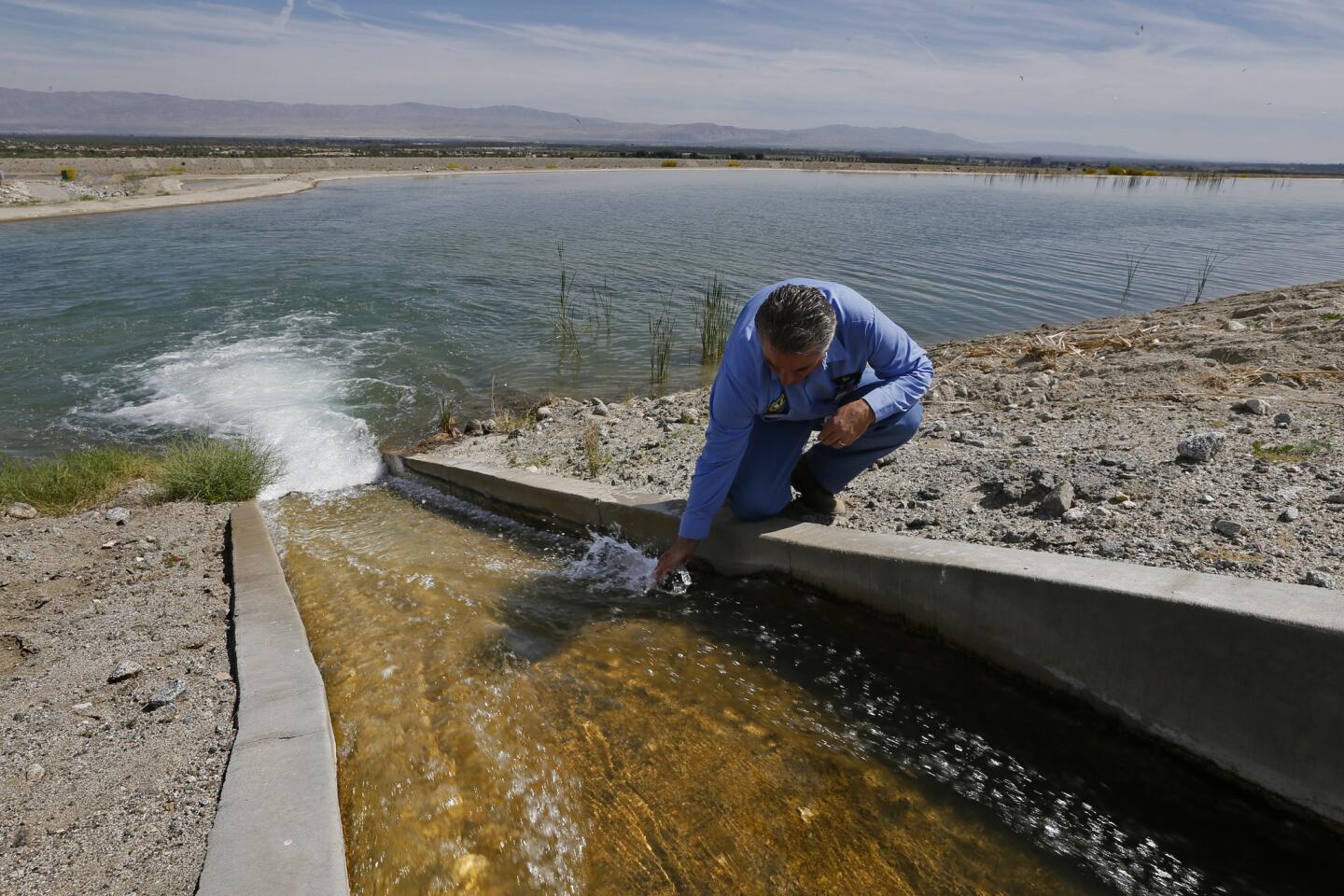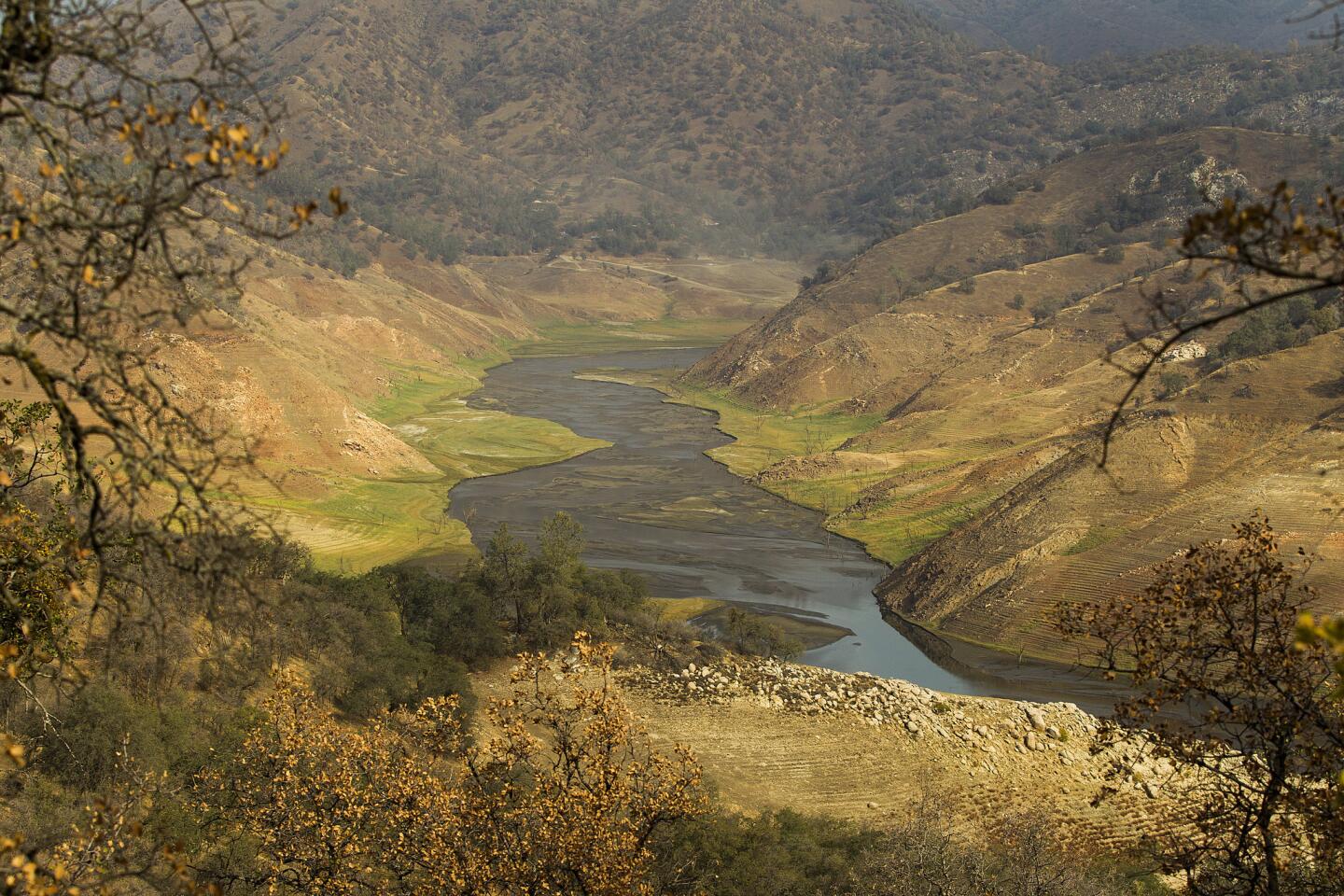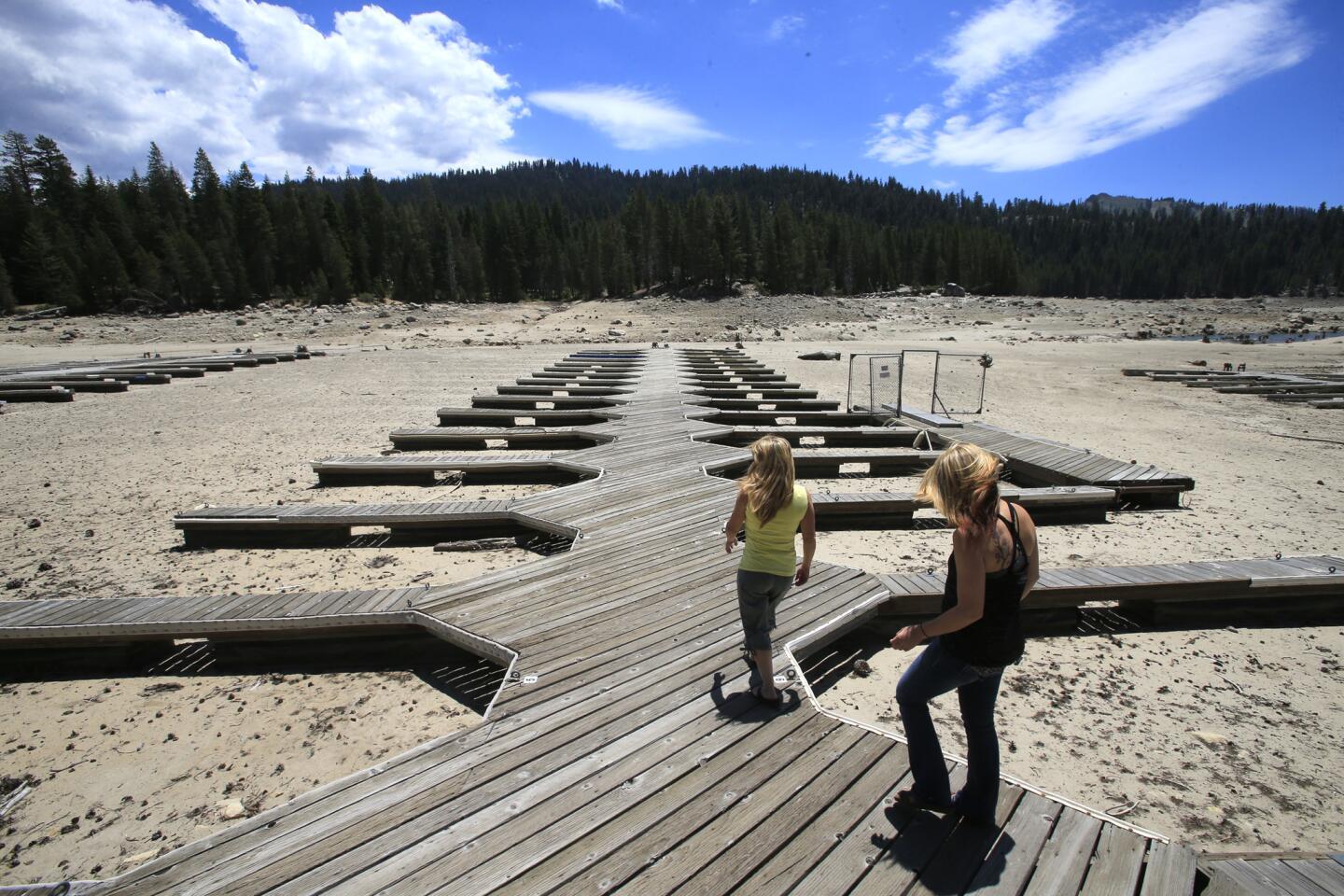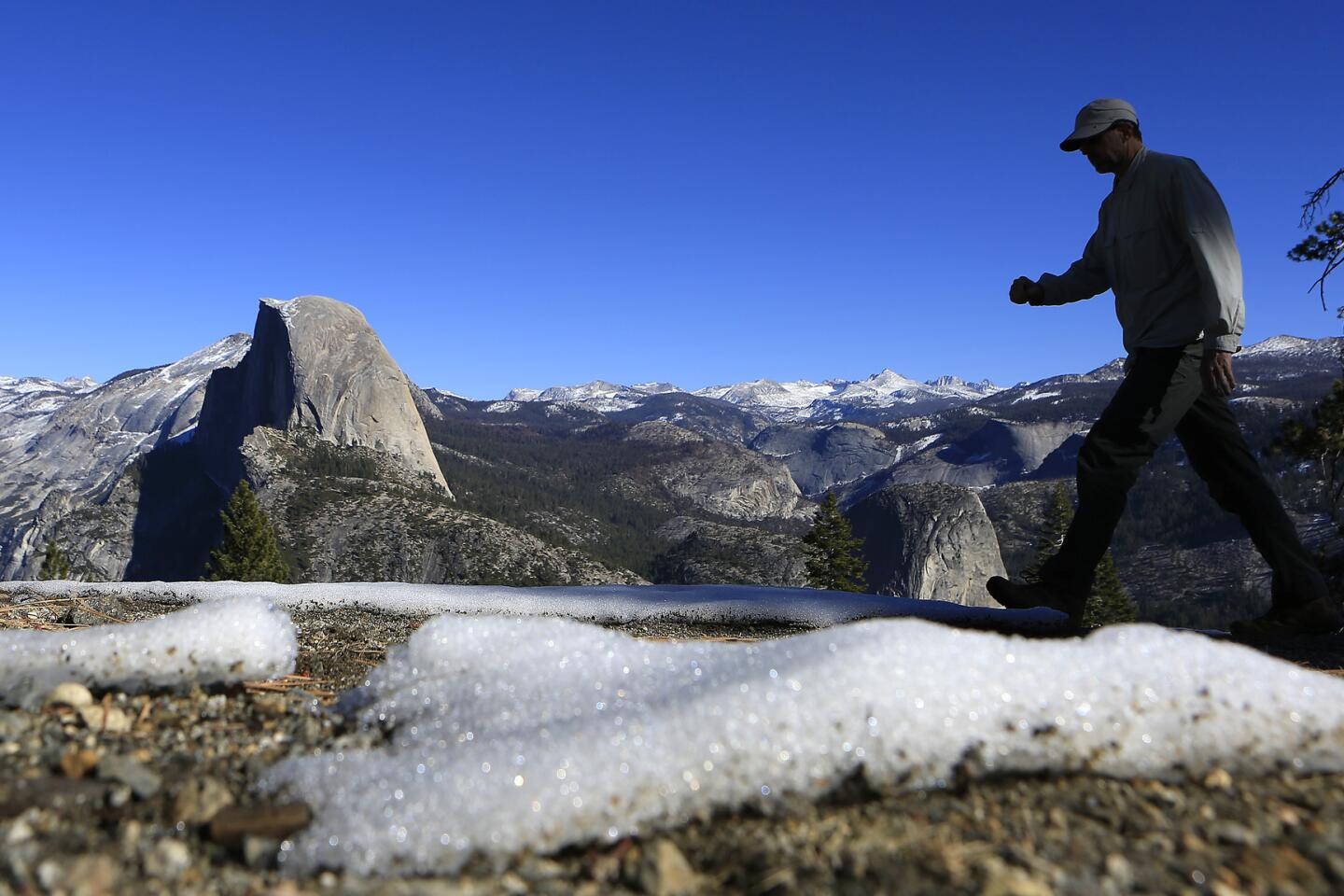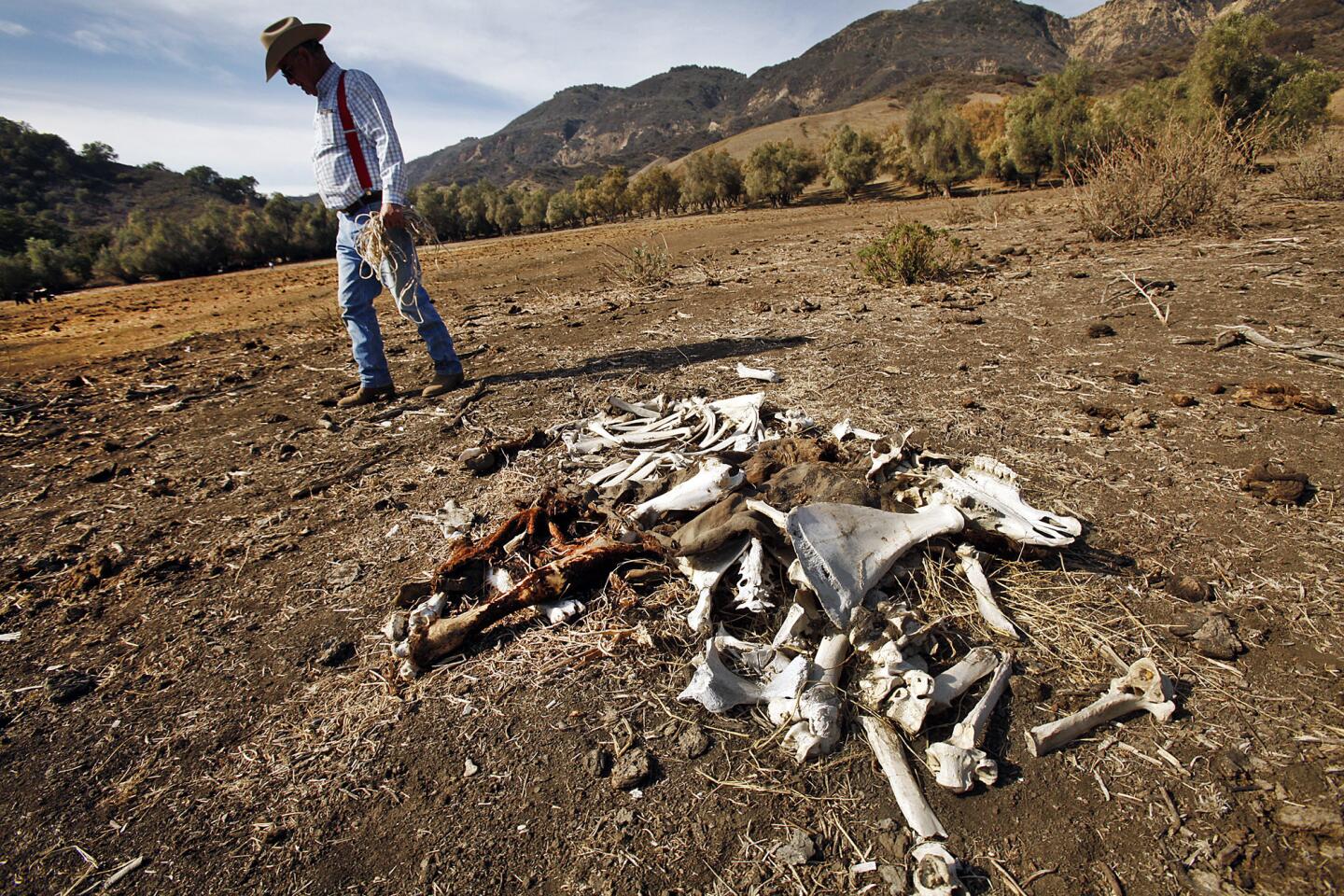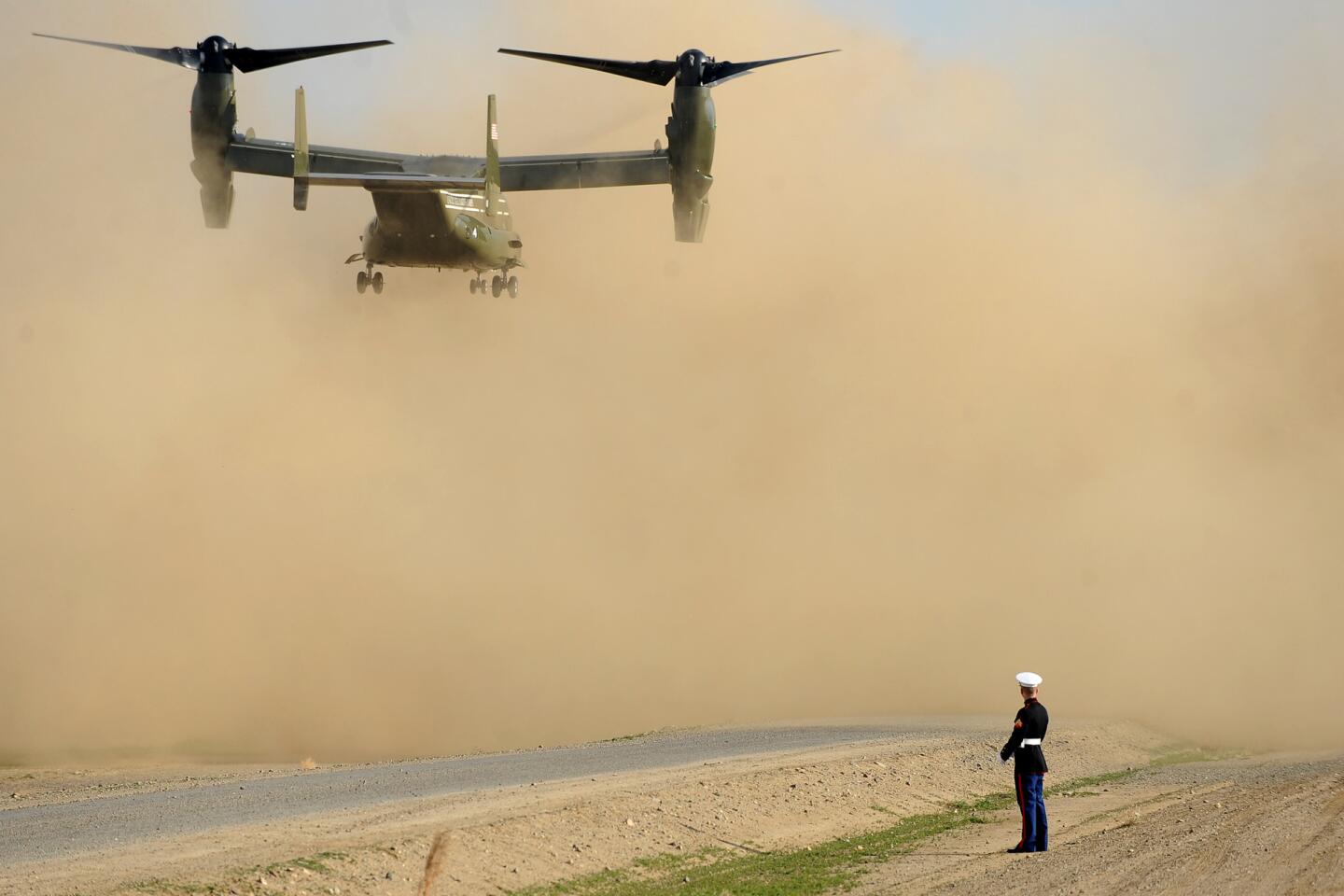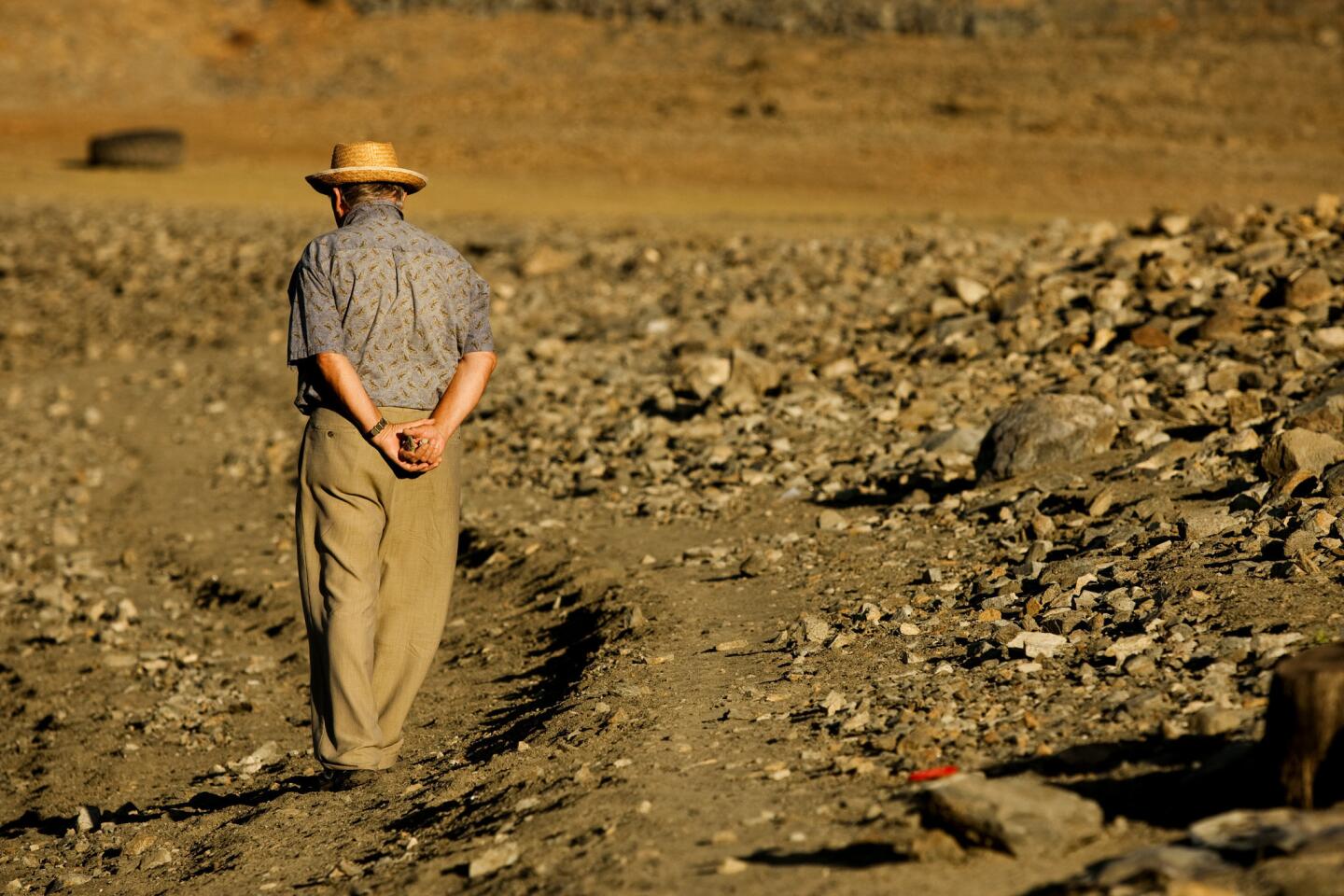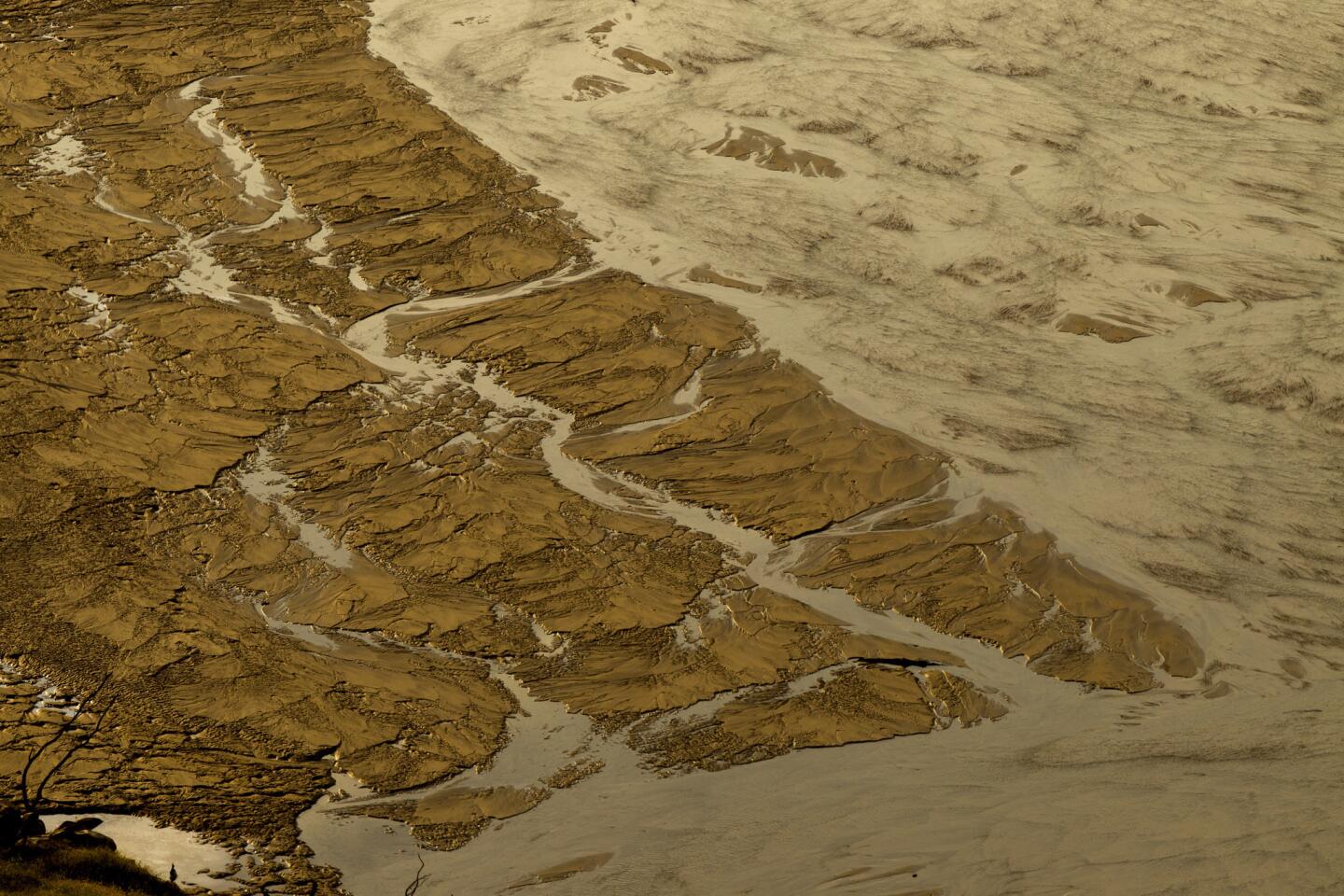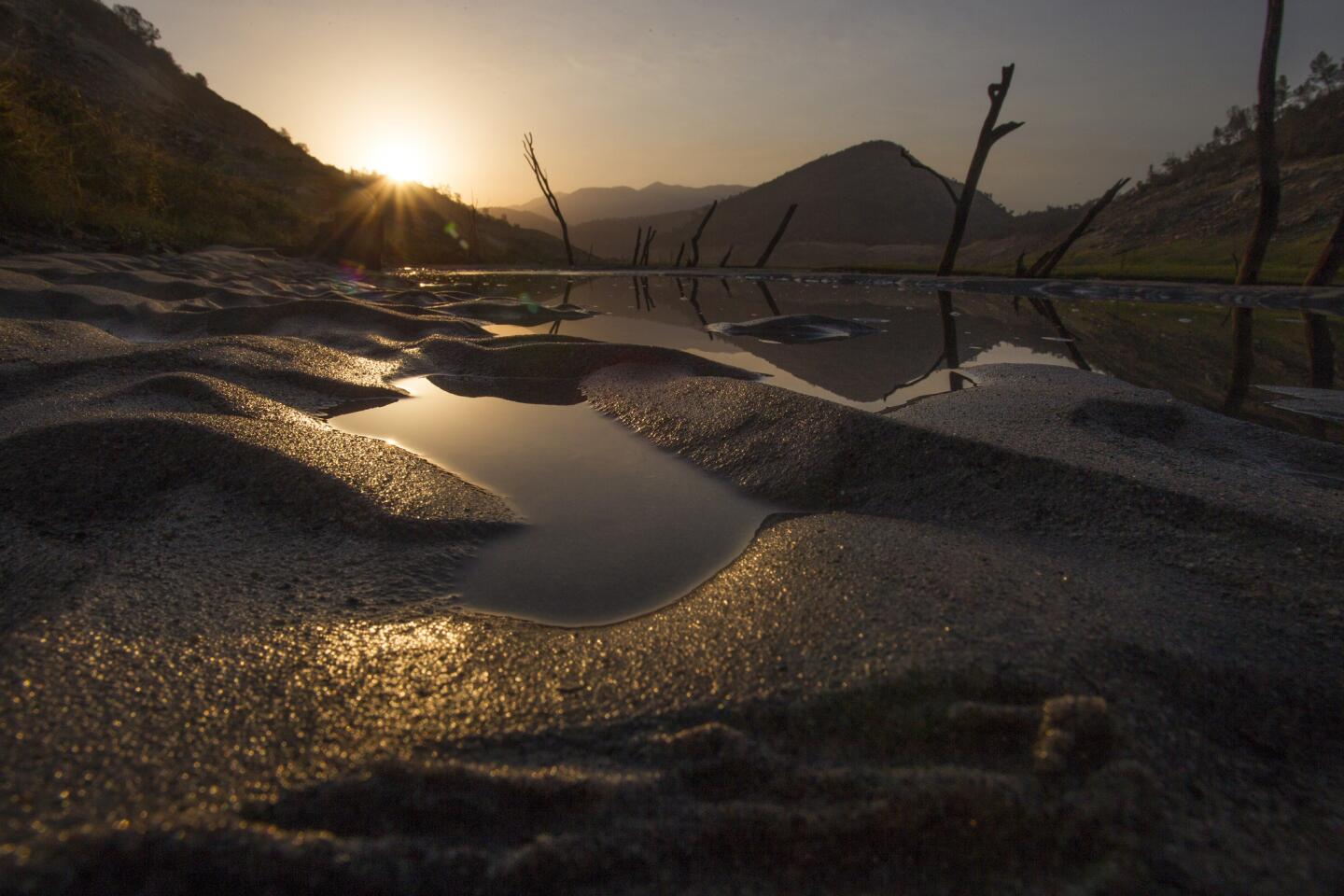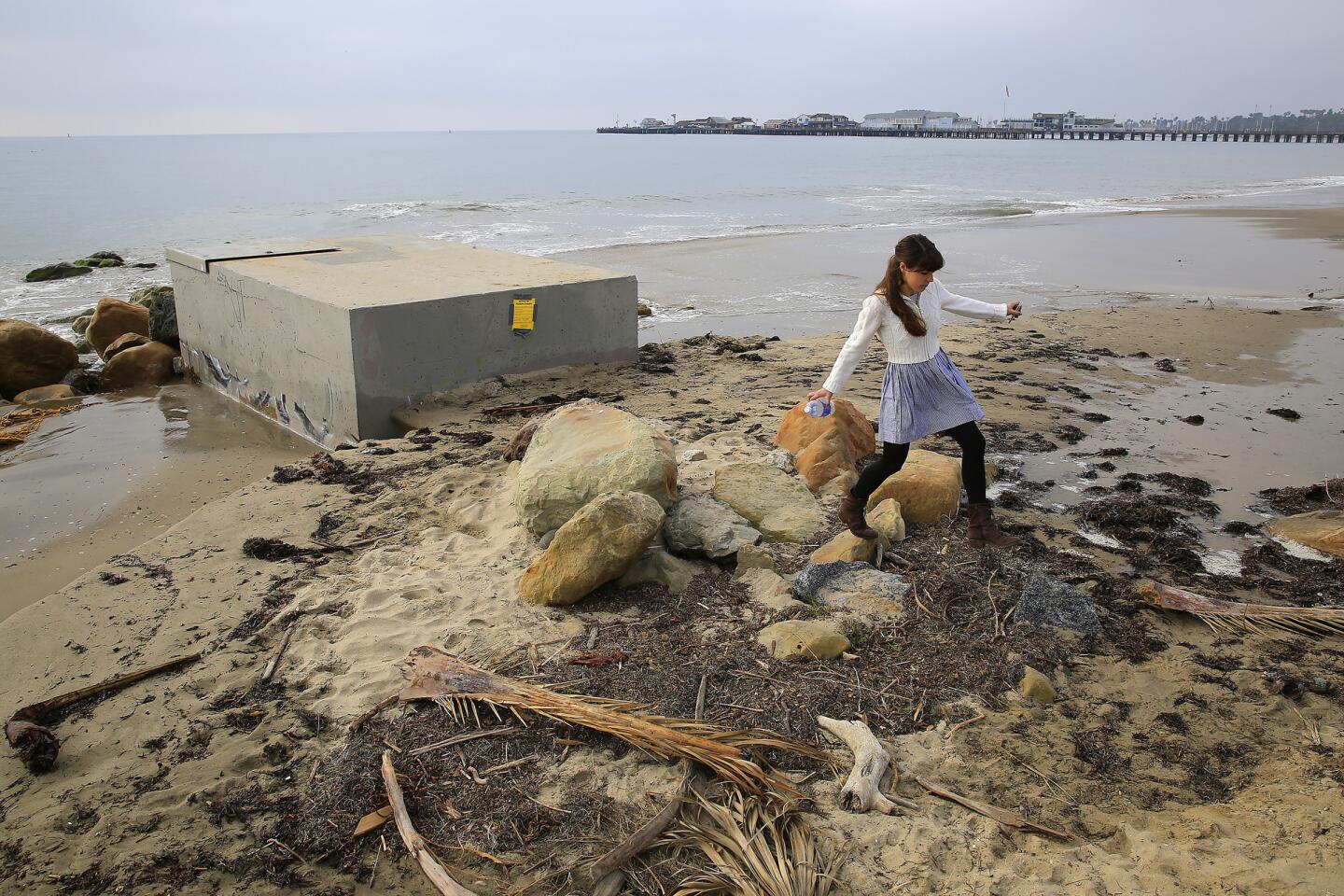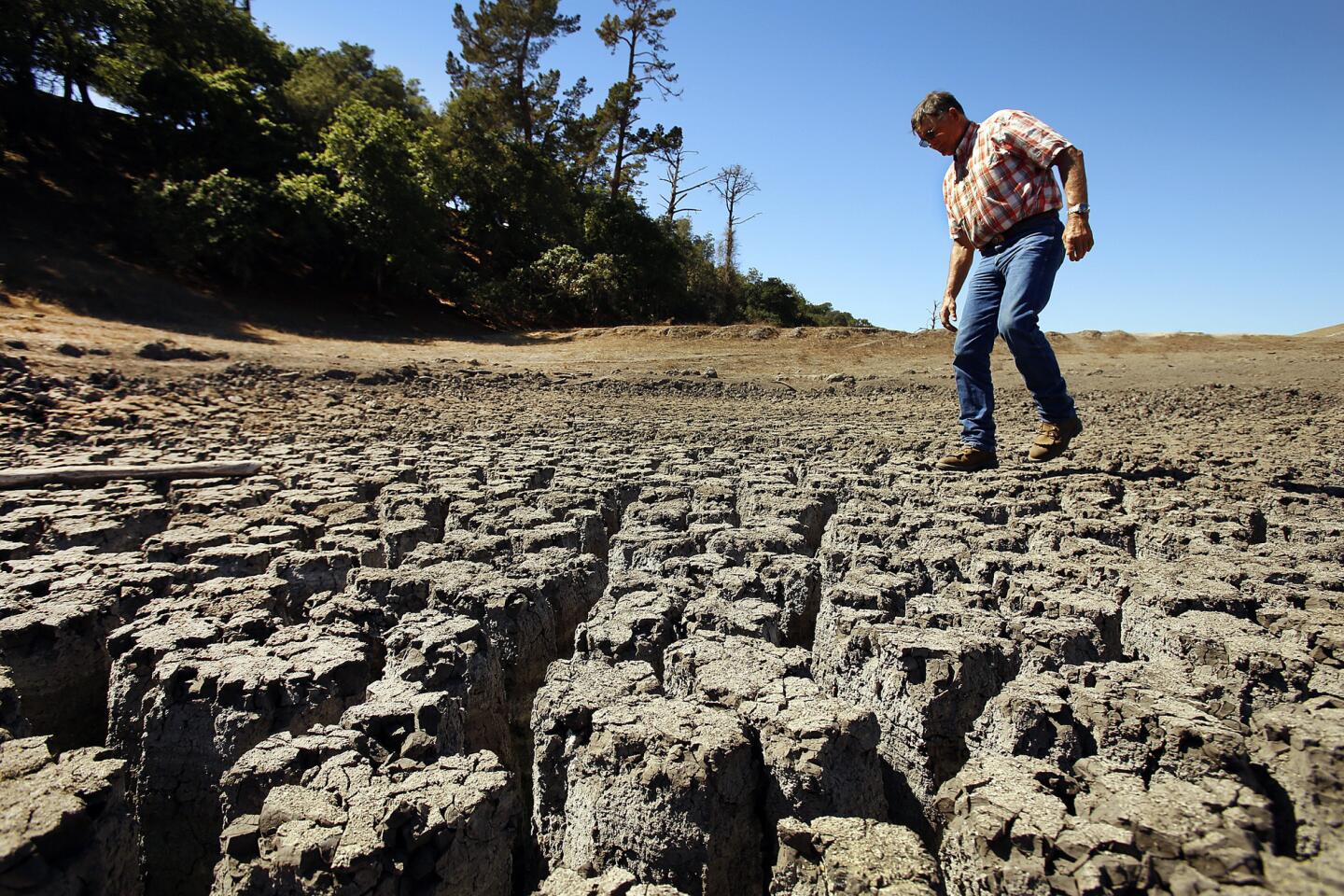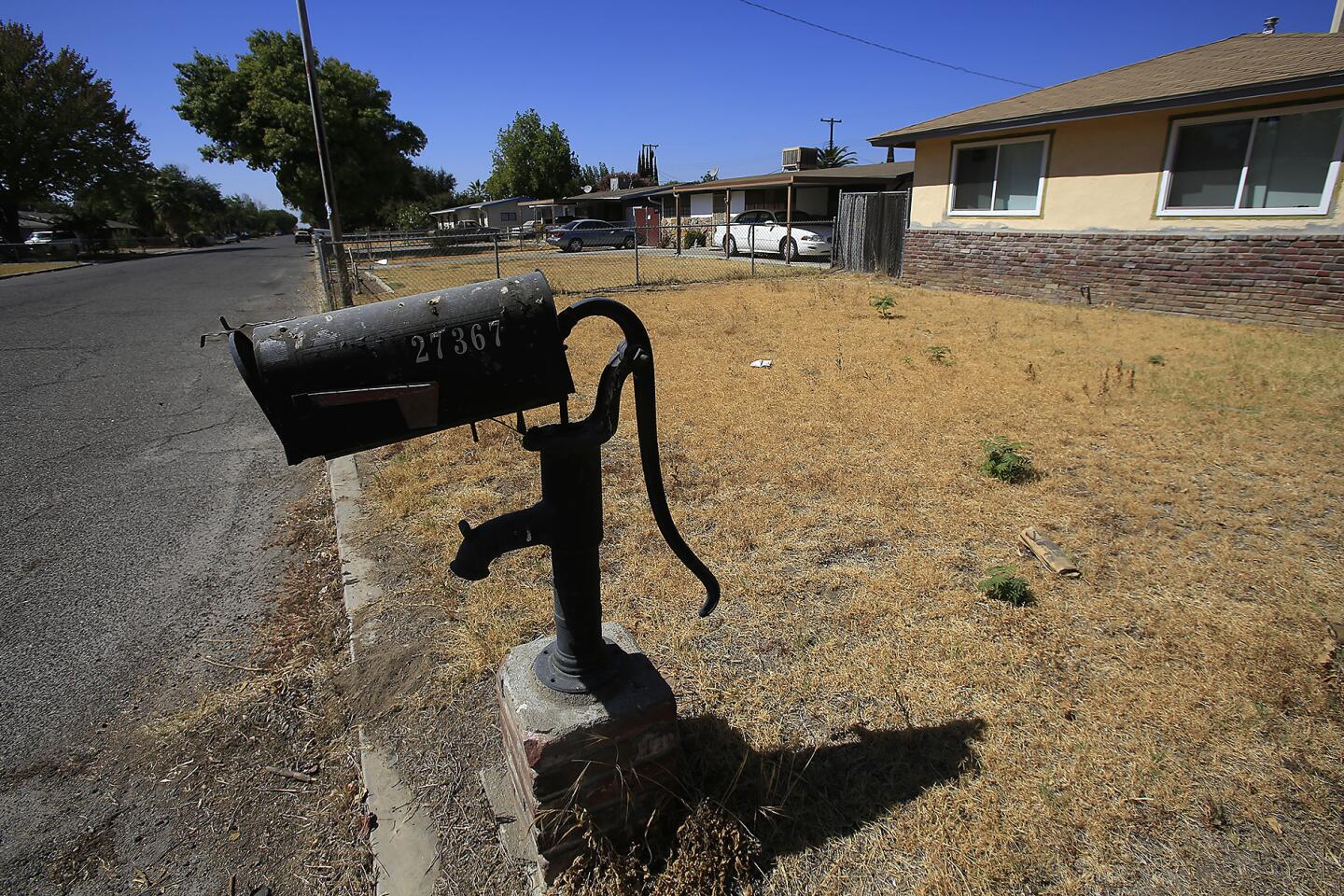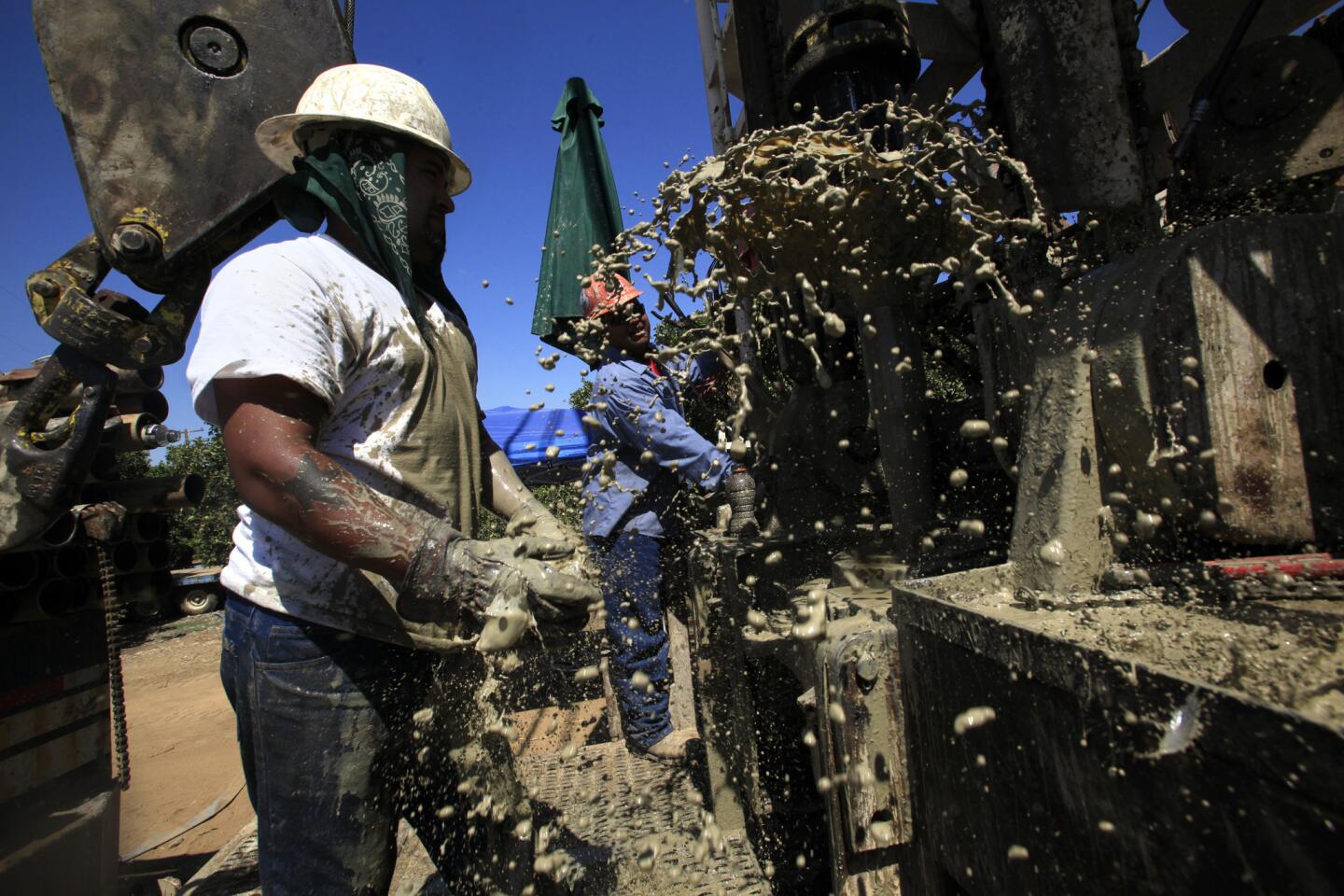When Gov. Jerry Brown called for a statewide 25% cut in urban water use last April, drought-weary Californians snapped quickly into compliance.
They slashed consumption enough to easily exceed Brown’s order for four straight months, cheering state water regulators.
But as temperatures cooled and the calendar turned to fall, conservation slowed. And on Thursday, officials said the state’s cumulative water savings fell below 25% for the first time in eight months of reporting, to 24.8%.
Officials “always knew it would end up being down to the wire,” said Felicia Marcus, chairwoman of the State Water Resources Control Board.
With one month left under the current emergency order, this unusually hot and dry February could cause California to come up just short of its savings goal.
“People in California have done something extraordinary,” Marcus said of the 374 billion gallons of water saved since June. “The disappointment is just, God, we’re so close — we want to get there.”
Even with the help of steady rains in January, people in cities and towns across the state reduced their water consumption by just 17.1% compared with January 2013. It was the fourth consecutive month in which Californians failed to cut use by 25%; it was also the smallest percentage reduction since the order took effect.
Officials emphasized Thursday that they expected savings percentages to be lower during the cooler and wetter winter months, when people typically use less water and there is less room to cut back. They commended the efforts of conservation-minded Californians while urging everyone to keep it up.
See the most-read stories this hour >>
“Twenty-four out of 25 is a really good score,” said Max Gomberg, the water board’s climate and conservation manager. “An A grade in any classroom.”
Even if the state ends up short of 25%, he said, “I don’t think there is going to be any statewide consequence.”
Instead, Gomberg said, “the consequences are for the individual water suppliers — the ones who have not been meeting their standards.”
1/31
More than 600 empty docks sit on dry, cracked dirt at Folsom Lake Marina, one of the largest inland marinas in California. As the state ended 2014 with no guarantee of significant rain and snow this winter, Californians face the prospect of stricter rationing and meager irrigation deliveries for agriculture.
(Allen J. Schaben / Los Angeles Times) 2/31
Researcher Blair McLaughlin, left, and Andrew Weitz, right, walk through Blue Oak trees looking for trees affected by the drought near Shandon, Calif.
(Al Seib / Los Angeles Times) 3/31
Passing storm clouds provide the backdrop for an early morning walk on the sand at the Santa Ana River inlet in Newport Beach.
(Mark Boster / Los Angeles Times) 4/31
A crew from Smartgrass Synthetic Turf rolls up a pre-measured piece of artificial grass for installation in the backyard of a home in Pacific Palisades.
(Luis Sinco / Los Angeles Times) 5/31
Rancher Bill Talbot opens a gate on his family’s leased ranch land near Bishop, Calif. Several ranchers are reducing their herds due to the drought.
(Brian van der Brug / Los Angeles Times) 6/31
As the California drought grinds into its fourth year, the barren shoreline of Shasta Lake shows the steady drop in water level. The reservoir on the Sacramento River holds about 40% of the federal Central Valley Project’s stored supply.
(Don Bartletti / Los Angeles Times) 7/31
Cindy Lazaris of the Catalina Island Conservancy walks along cracked earth that used to form the bottom of the Thompson (Middle Ranch) Reservoir, which has shrunk to a level which may cause the city of Avalon to cut its water usage by 50%.
(Bob Chamberlin / Los Angeles Times) 8/31
Los Angeles area residents could be required to cover swimming pools due to the drought.
(Robert Gauthier / Los Angeles Times) 9/31
Exposed shoreline shows low water levels at Castaic Lake.
(Robert Gauthier / Los Angeles Times) 10/31
From an inspection boat in February 2014, San Gabriel Dam operators Herbert Romero, center, and Jose Aguilar use a measuring tape to determine that the depth of San Gabriel Reservoir near the dam is 50 feet deep. The lingering drought has exposed more than 121 feet of the reservoir’s shoreline. (Don Bartletti / Los Angeles Times)
11/31
Water rings mark receding levels of the Pine Flat Reservoir. (Allen J. Schaben / Los Angeles Times)
12/31
Lack of snow in a view from Glacier Point in Yosemite National Park. (Brian van der Brug / Los Angeles Times)
13/31
Severe drought conditions reveal dry-docked boats in a parking lot and over 600 empty docks sitting on dry, cracked dirt at Folsom Lake Marina, which is one of the largest inland marinas in California. (Allen J. Schaben / Los Angeles Times)
14/31
Sunset’s glow illuminates the skyline and receding water due to severe drought conditions at Folsom Lake State Recreational Area. (Allen J. Schaben / Los Angeles Times)
15/31
The effects of California’s ongoing drought are evident in the dry, cracked banks leftover from dropping water levels at Diamond Valley Lake in Hemet. (Allen J. Schaben / Los Angeles Times)
16/31
Sunrise highlights patterns of sand that remain after the water receded at the drought-stricken Pine Flat Reservoir. (Allen J. Schaben / Los Angeles Times)
17/31
The surrounding land is testimony to the effects of drought on the depleted Pine Flat Reservoir. (Robert Gauthier / Los Angeles Times)
18/31
Irrihgation water floods the floor of a date palm grove in the Coachella Valley. The Agua Caliente Band of Cahuilla Indians’ court battle with two water agencies is one of several legal disputes over water that are being fought across California. (Don Bartletti / Los Angeles Times)
19/31
CKen Gray of the Coachella Valley Water District kneels at a flume at one of many basins at the Thomas E. Levy Groundwater Replenishment Facility. (Don Bartletti / Los Angeles Times)
20/31
Earthen patterns are left behind from the receding waters of the drought-stricken Pine Flat Reservoir. (Allen J. Schaben / Los Angeles Times)
21/31
In July 2014, marina owner Elaine Newton walks with her daughter Ashleigh Newton along docks and boat ramps that are now idle at Huntington Lake due to historically low water levels caused by the drought. (Mark Boster / Los Angeles Times)
22/31
Patchy snow is all that’s on the ground at Glacier Point in Yosemite National Park in January. The snow is normally much deeper at that time of year. (Brian van der Brug / Los Angeles Times)
23/31
In January 2014, cattle rancher Rob Frost surveys the remains of an animal that died due to drought conditions on grazing land near Santa Paula, where the grass is normally 6 to 10 inches high this time of year. Frost says in an ordinary year he will lose 1% of his cattle to natural causes but he is now losing nearly 10%. (Al Seib / Los Angeles Times)
24/31
President Obama visits Los Banos, Calif., in February 2014 to see drought conditions. (Wally Skalij / Los Angeles Times)
25/31
A lone fisherman waiting for a bite paces across a large portion of dry lake bed due to severe drought conditions at Folsom Lake. (Allen J. Schaben / Los Angeles Times)
26/31
At drought-stricken Pine Flat Reservoir in October 2014, patterns are revealed by receding waters. (Allen J. Schaben / Los Angeles Times)
27/31
Sunrise in October 2014 highlights patterns of sand amid puddles that remain at drought-stricken Pine Flat Reservoir in Sanger, Calif. (Allen J. Schaben / Los Angeles Times)
28/31
City of Santa Barbara public works department intern Devon Schmidt steps along the shoreline in February after checking the intake weir for the city’s desalination plant. (Brian van der Brug / Los Angeles Times)
29/31
In October 2014, rancher Jon Pedotti walks on the parched, cracked lake bed of his 1,561-acre ranch along San Simeon Creek in the Santa Lucia Mountain foothills of Cambria. Of the lake, which fed water to his 280 cattle, he said: “It’s never been this dry.” (Al Seib / Los Angeles Times)
30/31
A dead lawn in Parkwood, Calif., in September 2014 after a well failed and the town had to import water. (Brian van der Brug / Los Angeles Times)
31/31
Muddy water gushes out of a newly drilled well in July 2014 serving a farm in Terra Bella, Calif. (Bob Chamberlin / Los Angeles Times)
The water board assigned conservation standards to each of the state’s more than 400 urban suppliers last year. Suppliers with a history of high per-capita water use were ordered to cut as much as 36% compared with 2013 totals. Suppliers with a history of lower consumption were told to cut as little as 4%.
Some suppliers have struggled to meet their targets and a few have drawn fines for noncompliance. In January, only about 58% of water providers met or were within one percentage point of their conservation standard, the water board reported.
Water board staff members gave only a vague outline Thursday of how or when they might punish individual water suppliers for noncompliance.
Sign up for our weekly Water and Power newsletter>>
“Moving forward, we will watch the numbers very closely,” said Matthew S. Buffleben, of the board’s enforcement office.
Earlier this month the water board approved a new emergency drought regulation that extends the conservation rules through October, with modest changes that could ease standards by as much as eight percentage points for some water providers. Those credits and adjustments are expected to drive the state’s overall savings below 25%.
Environmental advocacy groups and some experts have questioned whether lowering expectations is wise in the middle of an ongoing drought.
“If anything, we should be looking at ways to strengthen conservation regulations,” said Mark Gold, associate vice chancellor for environment and sustainability at UCLA. “Twenty-five percent might be the start, not the finish.”
For more on the California drought and water, follow me on Twitter @ByMattStevens
ALSO
L.A. councilman blocks DWP move even as he advocates less political meddling at utility
Female inmate firefighter suffers major injuries while battling Malibu brush fire
1 dead, 3 hurt after powerful waves pound break wall in Redondo Beach
